Current language
English
- Log in
-
- Sydney Overseas Office
- London Overseas Office
- Toronto Overseas Office
- Los Angeles Overseas Office
- New York Overseas Office
- Ulaanbaatar Overseas Office
- Dubai Overseas Office
- New Delhi Overseas Office
- Manila Overseas Office
- Jakarta Overseas Office
- Hanoi Overseas Office
- Kuala Lumpur Overseas Office
- Singapore Overseas Office
- Bangkok Overseas Office
- Map
Popular search
- Sydney Overseas Office
- London Overseas Office
- Toronto Overseas Office
- Los Angeles Overseas Office
- New York Overseas Office
- Ulaanbaatar Overseas Office
- Dubai Overseas Office
- New Delhi Overseas Office
- Manila Overseas Office
- Jakarta Overseas Office
- Hanoi Overseas Office
- Kuala Lumpur Overseas Office
- Singapore Overseas Office
- Bangkok Overseas Office
Contents View
-
-
-
100 Must-Visit Tourist Spots of Korea
-
04/07/2023
311.6K
-
24
27
-
-
-
-
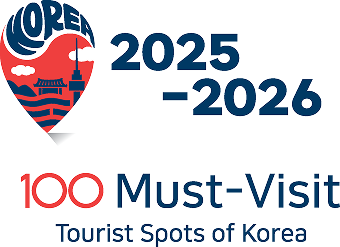
Travel the "100 Must-Visit Tourist Spots of Korea!"
The "100 Must-Visit Tourist Spots of Korea" is a project organized by the Ministry of Culture, Sports and Tourism and the Korea Tourism Organization to promote domestic tourism. This biennial project selects and promotes a diverse range of representative tourist spots in Korea for all Koreans to visit and enjoy.
PDF DOWNLOAD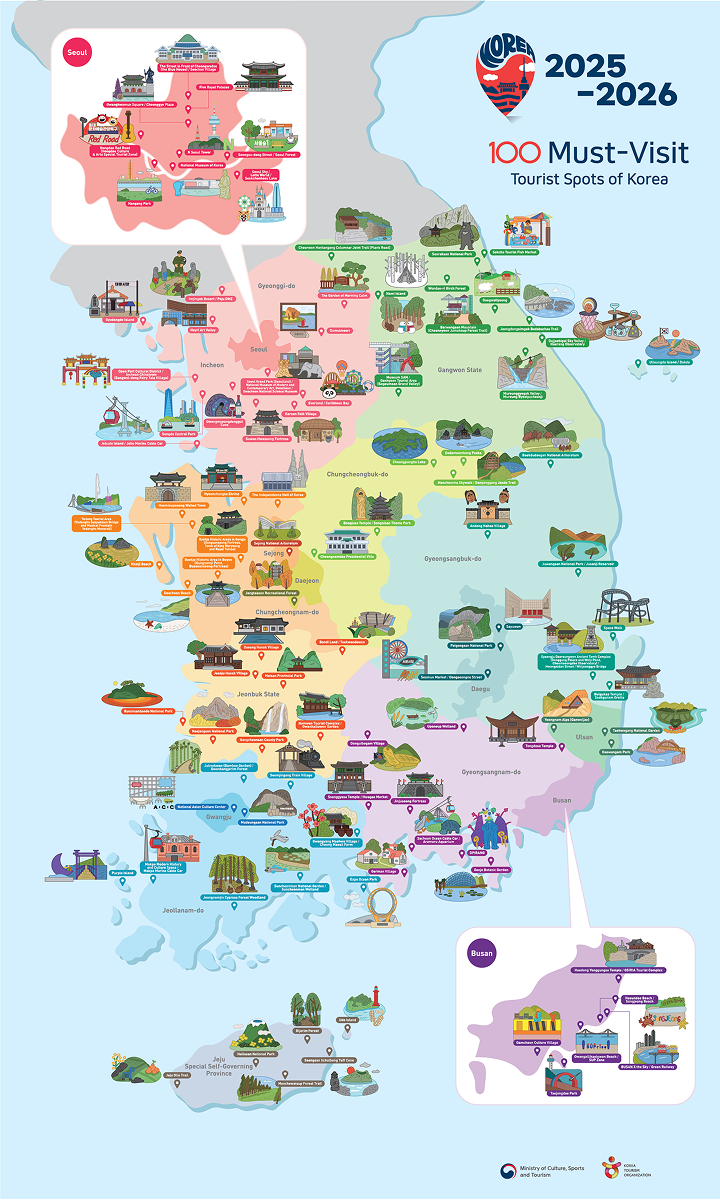
Seoul Capital Area
-
- Seoul
- Five Royal Palaces
- Seoul
- Five Royal Palaces

The Five Royal Palaces of Seoul (Gyeongbokgung, Changdeokgung, Deoksugung, Changgyeonggung, and Gyeonghuigung) are the palaces of the Joseon Dynasty, embodying the rich history and culture of Korea. Gyeongbokgung Palace, the main palace (where the king resided), and Changdeokgung Palace, a UNESCO World Heritage site, each have their own distinctive features, as do the others. Jongno-gu and Jung-gu, Seoul -
- Seoul
- N Seoul Tower
- Seoul
- N Seoul Tower

Located at the top of Namsan Mountain in the heart of Seoul, it is a landmark offering a sweeping view of the city. The observatory provides a 360-degree panoramic view, along with various dining establishments and convenient facilities. Yongsan-gu, Seoul -
- Seoul
- Gwanghwamun Square / Cheonggye Plaza
- Seoul
- Gwanghwamun Square / Cheonggye Plaza

At Gwanghwamun Square, which stretches from Gwanghwamun Gate, the main gate of Gyeongbokgung Palace, to the Sejong-daero Intersection, statues of King Sejong and Admiral Yi Sun-sin are placed, as well as various themed relaxation spaces and attractions. Nearby, at the starting point of Cheonggyecheon Stream, an ecological relaxation spot in the city center, lies Cheonggye Plaza. Jongno-gu and Jung-gu, Seoul -
- Seoul
- National Museum of Korea
- Seoul
- National Museum of Korea

As a representative museum of Korea, it features permanent exhibition halls organized by era and theme, as well as facilities such as an immersive digital gallery, special exhibition galleries, and a children's museum. The outdoor space, adorned with ponds, a pavilion, and a waterfall, is also appealing. Yongsan-gu, Seoul -
- Seoul
- Seoul Sky / Lotte World / Seokchonhosu Lake
- Seoul
- Seoul Sky / Lotte World / Seokchonhosu Lake

Seoul Sky, an observatory in the Lotte World Tower, the 6th tallest building in the world and the tallest in South Korea, offers a stunning view of Seoul from 500 m above ground. The area also features Lotte World, the largest indoor theme park in the country, and Seokchonhosu Lake, renowned for its cherry blossoms. Songpa-gu, Seoul -
- Seoul
- Seongsu-dong Street / Seoul Forest
- Seoul
- Seongsu-dong Street / Seoul Forest

Seongsu-dong Street has unique cafés, restaurants, prop shops, and pop-up stores, creating a trendy yet artistic atmosphere. Nearby, Seoul Forest, a large urban oasis where forests and parks coexist, offers a perfect spot for relaxation and is ideal for exploring the area. Seongdong-gu, Seoul -
- Seoul
- The Street in Front of Cheongwadae (the Blue House) / Seochon Village
- Seoul
- The Street in Front of Cheongwadae (the Blue House) / Seochon Village

The street in front of Cheongwadae (The Blue House) runs between the northern wall of Gyeongbokgung Palace and Cheongwadae, offering a quiet walking route in the heart of the city. Seochon Village, located to the west of Gyeongbokgung Palace, is an emotional travel destination where old spaces and trendy shops harmonize along the alleys. Jongno-gu, Seoul -
- Seoul
- Hangang Park
- Seoul
- Hangang Park

The Hangang River is a representative public relaxation and cultural space in Seoul, where nature, culture, and healing coexist. It offers various leisure activities such as cycling, walking, water sports, and festivals. There are a total of 11 Hangang Parks in Seoul, each featuring unique facilities and themes. Yeouido Hangang Park, Yeongdeungpo-gu, Seoul. Banpo Hangang Park, Seocho-gu, Seoul -
- Seoul
- Hongdae Red Road (Hongdae Culture and Arts Special Tourist Zone)
- Seoul
- Hongdae Red Road (Hongdae Culture and Arts Special Tourist Zone)

It is a place where art, music, and fashion coexist, with various hot spots clustered together. Areas such as Fashion Street and Café Street are marked in different colors based on their characteristics, making it easy for anyone to explore. You can also enjoy street art, like busking and road galleries. Mapo-gu, Seoul -
- Incheon
- Open Port Cultural District / Incheon Chinatown (Songwol-dong Fairy Tale Village)
- Incheon
- Open Port Cultural District / Incheon Chinatown (Songwol-dong Fairy Tale Village)

The Open Port Cultural District is a great place to experience the atmosphere of the late 19th century, with modern buildings from the Incheon Port opening period still standing. Visitors can explore the exotic landscape of Incheon Chinatown and the fairy tale-themed Songwol-dong Fairy Tale Village along the same route. Jung-gu, Incheon -
- Incheon
- Gyodongdo Island
- Incheon
- Gyodongdo Island

Gyodongdo Island, located adjacent to North Korea, was home to many refugees during the Korean War. Daeryong Market, established by displaced people, is a representative landmark, cherished for its retro atmosphere from the 1960s and 1970s and a variety of local foods. Hwagae Garden, featuring an observatory and monorail, is also a popular attraction. Gyodong-myeon, Ganghwa-gun, Incheon -
- Incheon
- Songdo Central Park
- Incheon
- Songdo Central Park

It is the first seawater park in Korea, utilizing seawater, and a city park that reflects Korea's geographical characteristics. Along artificial waterways, various themed gardens and Hanok Village have been created. Water leisure activities, such as water taxis, canoes, and boats, are also available. Yeonsu-gu, Incheon -
- Gyeonggi-do
- The Garden of Morning Calm
- Gyeonggi-do
- The Garden of Morning Calm

As an arboretum that captures the beauty of Korea, it is composed of various themed gardens, including a Korean Garden, Sunken Garden, and Bonsai Garden. The arboretum offers a unique charm throughout the four seasons, and in winter, it hosts the Light Festival, showcasing its dazzling beauty. Sang-myeon, Gapyeong-gun, Gyeonggi-do -
- Gyeonggi-do
- Seoul Grand Park (Seoulland) / National Museum of Modern and Contemporary Art, Gwacheon / Gwacheon National Science Museum
- Gyeonggi-do
- Seoul Grand Park (Seoulland) / National Museum of Modern and Contemporary Art, Gwacheon / Gwacheon National Science Museum

Seoul Grand Park is a representative comprehensive theme park in Korea, offering a variety of attractions, including a zoo, botanical garden, theme park (Seoulland), baseball field, and Healing Forest. It is also home to the National Museum of Modern and Contemporary Art, Gwacheon (MMCA Gwacheon), which boasts a nature-friendly atmosphere, and the Gwacheon National Science Museum, where visitors can enjoy science and technology through interactive exhibits. Gwacheon-si, Gyeonggi-do -
- Gyeonggi-do
- Gwangmyeongdonggul Cave
- Gyeonggi-do
- Gwangmyeongdonggul Cave

Gwangmyeongdonggul Cave is a former metal mine that operated from 1912 to 1972, producing gold, silver, copper, zinc, and other minerals. The 7.8-km-long and 275-meter-deep mine was abandoned for over 40 years before being purchased by Gwangmyeong City. It has since been transformed into a cave theme park, offering various experiences, performances, and exhibits. Gwangmyeong-si, Gyeonggi-do -
- Gyeonggi-do
- Suwon Hwaseong Fortress
- Gyeonggi-do
- Suwon Hwaseong Fortress

Built during King Jeongjo's reign in the Joseon Dynasty, Hwaseong Fortress employed advanced technologies such as the crane and combined both Eastern and Western construction techniques, earning it recognition as a UNESCO World Heritage site. While walking along the fortress walls, visitors can explore more than 40 structures, each with unique shapes and characteristics. Paldal-gu, Suwon-si, Gyeonggi-do -
- Gyeonggi-do
- Dumulmeori
- Gyeonggi-do
- Dumulmeori

It is the point where the Namhangang and Bukhangang Rivers meet, marking the beginning of the Hangang River. The beautiful scenery, with morning mist rising from the water, yellow sailboats, and a 400-year-old zelkova tree, has made it a popular filming location for movies and dramas. Yangseo-myeon, Yangpyeong-gun, Gyeonggi-do -
- Gyeonggi-do
- Korean Folk Village
- Gyeonggi-do
- Korean Folk Village

It is a traditional cultural theme park where visitors can vividly and enjoyably experience Korean traditional life and culture in a space that recreates a Joseon-era village. In addition to permanent programs, such as outdoor hands-on exhibitions and traditional performances, seasonal special events that reinterpret traditional culture are held. Giheung-gu, Yongin-si, Gyeonggi-do -
- Gyeonggi-do
- Everland / Caribbean Bay
- Gyeonggi-do
- Everland / Caribbean Bay

Everland, Korea's representative theme park, hosts a variety of festivals throughout the year and offers thrilling attractions, a zoo, and themed gardens. Right next to it is Caribbean Bay, the largest water park in Korea, where visitors can enjoy water activities year-round. Cheoin-gu, Yongin-si, Gyeonggi-do -
- Gyeonggi-do
- Imjingak Resort / Paju DMZ
- Gyeonggi-do
- Imjingak Resort / Paju DMZ

Imjingak Resort, a symbol of division and peace, features attractions such as the Imjingak Peace Gondola, Mangbaedan Altar, the Bridge of Freedom, the Korean Peninsula Ecological Peace Tourism Information Center, and the National Memorial for Abductees During the Korean War. The Paju Demilitarized Zone (DMZ) is a peace tourism destination where visitors can experience the reality of the world's only divided country. Munsan-eup, Paju-si, Gyeonggi-do -
- Gyeonggi-do
- Heyri Art Valley
- Gyeonggi-do
- Heyri Art Valley

Heyri Art Valley is a cultural and artistic village created by artists from various fields, with architecture designed to blend harmoniously with the surrounding natural environment, adding to its charm. Visitors can enjoy spaces such as museums, galleries, workshops, restaurants, and cafés, as well as a variety of experience programs. Tanhyeon-myeon, Paju-si, Gyeonggi-do -
- Gyeonggi-do
- Jebudo Island / Jebu Marine Cable Car
- Gyeonggi-do
- Jebudo Island / Jebu Marine Cable Car

Jebudo Island is known as the "Island of Mystery" because, during low tide, the sea recedes, opening a path to and from the island. Riding the Jebu Marine Cable Car, which connects the island to the mainland, offers a refreshing aerial view of the sea, mudflats, and the island. Seosin-myeon, Hwaseong-si, Gyeonggi-do -
- Gangwon-do
- Jeongdongsimgok Badabuchae Trail
- Gangwon-do
- Jeongdongsimgok Badabuchae Trail

It is a 3 km coastal trekking course along the Marine Terrace in Jeongdongjin, designated as a Natural Monument. Walking the trail between Jeongdong Port and Simgok Port allows visitors to enjoy the mysterious marine terraces formed 2 to 2.5 million years ago and the pristine natural scenery. Gangdong-myeon, Gangneung-si, Gangwon-do -
- Gangwon-do
- Dojjaebigol Sky Valley / Haerang Observatory
- Gangwon-do
- Dojjaebigol Sky Valley / Haerang Observatory

Dojjaebigol Sky Valley is a unique attraction featuring experience facilities such as a 59-meter-high skywalk, a giant slide, and a sky cycle. Along the coastline is the Haerang Observatory, a sea bridge shaped like a goblin's club. Donghae-si, Gangwon-do -
- Gangwon-do
- Mureunggyegok Valley / Mureng Byeolyucheonji
- Gangwon-do
- Mureunggyegok Valley / Mureng Byeolyucheonji

Mureunggyegok Valley is a historic scenic spot and popular trekking destination, featuring impressive rock formations and waterfalls. Mureung Byeolyucheonji, created in a former quarry, boasts two emerald-colored lakes and various experience facilities, offering a unique and enjoyable experience. Donghae-si, Gangwon-do -
- Gangwon-do
- Seoraksan National Park
- Gangwon-do
- Seoraksan National Park

It is a treasure trove of natural ecosystems, home to numerous plants and animals, and a UNESCO Biosphere Reserve with rich scenic resources. The area offers stunning views throughout the four seasons, along with various trekking trails, a cable car, Sinheungsa Temple, campgrounds, and more. Yangyang-gun, Goseong-gun, and Inje-gun, Sokcho-si, Gangwon-do -
- Gangwon-do
- Sokcho Tourist Fish Market
- Gangwon-do
- Sokcho Tourist Fish Market

It is a traditional market full of fresh seafood and various local specialties from the East Coast. The market offers a variety of mouthwatering dishes, including the signature delicacy of deep-fried and braised chicken, Abai sundae, stuffed squid, and delicious salted seafood, all sure to tempt your taste buds. Sokcho-si, Gangwon-do -
- Gangwon-do
- Museum SAN / Ganhyeon Tourist Area (Sogeumsan Grand Valley)
- Gangwon-do
- Museum SAN / Ganhyeon Tourist Area (Sogeumsan Grand Valley)

Designed by world-renowned architect Tadao Ando, Museum SAN is a cultural and artistic space where architecture and art perfectly harmonize with nature. Located within the Ganhyeon Tourist Area, Sogeumsan Grand Valley offers thrilling activities, such as a suspension bridge, a plank road, and the 404 Sky Bridge. Jijeong-myeon, Wonju-si, Gangwon-do -
- Gangwon-do
- Wondae-ri Birch Forest
- Gangwon-do
- Wondae-ri Birch Forest

The birch trees, often called the "Noble of the Forest" or "Queen of the Forest," form a grove, creating a mysterious landscape. Located halfway up the mountain, 3.2 km from the parking lot, the area offers various hiking trails, ranging from 30 minutes to 2 hours. Inje-eup, Inje-gun, Gangwon-do -
- Gangwon-do
- Cheorwon Hantangang Columnar Joint Trail (Plank Road)
- Gangwon-do
- Cheorwon Hantangang Columnar Joint Trail (Plank Road)

It is a 3.6 km long and 1.5 m wide plank road trail built along the columnar joint gorge within the Hantangang UNESCO Global Geopark. Walking along the trail, which hangs on the edge of the cliffs, allows visitors to closely admire the columnar joints while experiencing a thrilling sense of adventure. Galmal-eup, Cheorwon-gun, Gangwon-do -
- Gangwon-do
- Nami Island
- Gangwon-do
- Nami Island

Nami Island, the largest private garden in Korea and a natural ecological and cultural space, regularly hosts various cultural events, performances, and exhibitions under the theme of "Fairy Tale Village and Song Village." It features the iconic Metasequoia Road, along with numerous forest trails, cultural spaces, and dining areas. Namsan-myeon, Chuncheon-si, Gangwon-do -
- Gangwon-do
- Daegwallyeong
- Gangwon-do
- Daegwallyeong

Daegwallyeong is a pristine area with high plains over 700 m above sea level and hilly terrain. It served as the main venue for the 2018 PyeongChang Winter Olympics. The region is home to famous tourist destinations featuring exotic landscapes, including Mona Yongpyong, Alpensia Resort, Samyang Roundhill, Daegwallyeong Yangtte Ranch, and Sky Ranch. Daegwallyeong-myeon, Pyeongchang-gun, Gangwon-do -
- Gangwon-do
- Barwangsan Mountain (Cheonnyeon Jumoksup Forest Trail)
- Gangwon-do
- Barwangsan Mountain (Cheonnyeon Jumoksup Forest Trail)

Barwangsan Mountain (1,458 m), known for its mysterious population of spreading yews, features a hiking trail leading to the summit, which was selected as a winner in the "Korean Tourism Awards 2023" in the category of barrier-free tourist destinations. The trail is designed with a gentle wooden deck, and amenities such as strollers and wheelchairs are available, allowing visitors with disabilities to enjoy the experience comfortably. Daegwallyeong-myeon, Pyeongchang-gun, Gangwon-do -
- Daejeon
- Jangtaesan Recreational Forest
- Daejeon
- Jangtaesan Recreational Forest

Centered around a dense metasequoia forest, Jangtaesan Recreational Forest offers attractions such as a forest adventure course and a suspension bridge, providing a relaxing and healing experience in nature. It also features forest lodges and a campground, making it a perfect place to spend a night surrounded by nature. Seo-gu, Daejeon -
- Sejong
- Sejong National Arboretum
- Sejong
- Sejong National Arboretum

As the first urban arboretum in Korea, the Sejong National Arboretum features distinctive themed gardens, including the largest Four Seasons Conservatory in Korea and the Korean Traditional Garden. It offers a unique experience in nature, enhanced by a variety of exhibitions, educational programs, and cultural activities. Yeongi-myeon, Sejong-si -
- Chungcheongbuk-do
- Dodamsambong Peaks
- Chungcheongbuk-do
- Dodamsambong Peaks
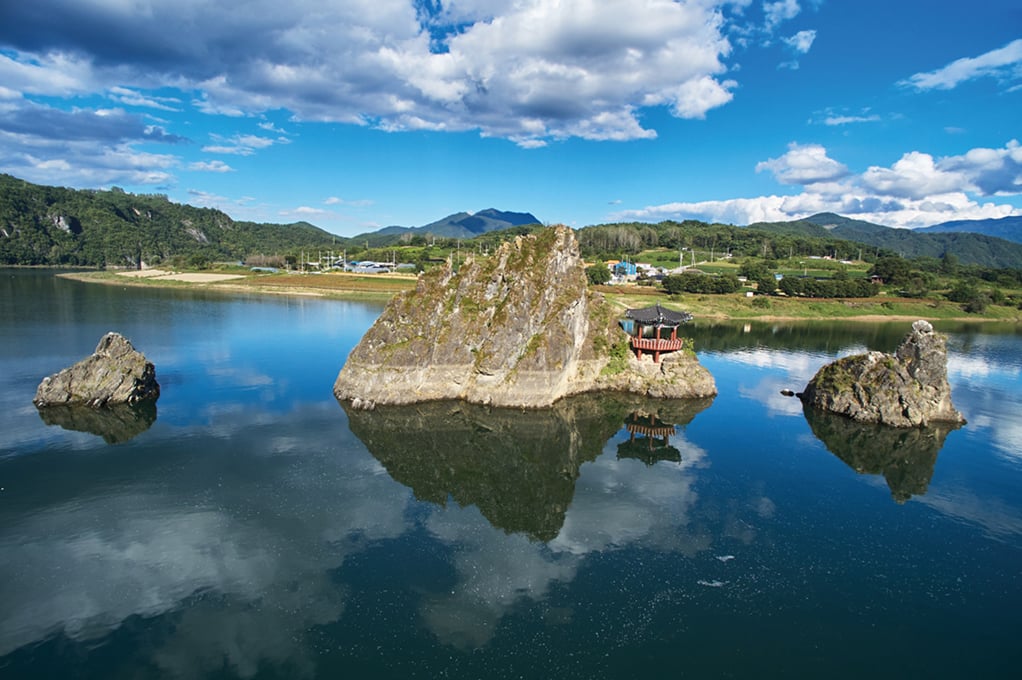
Known as a scenic spot that Jeong Do-jeon, a key figure in the founding of the Joseon Dynasty, held a special affection for, Dodamsambong Peaks is a breathtaking site. With three peaks rising prominently in the center of the Namhangang River, it boasts a stunning view framed by the distant Sobaeksan Mountain. The middle peak features a hexagonal pavilion called Samdojeong, adding to the picturesque charm. Maepo-eup, Danyang-gun, Chungcheongbuk-do -
- Chungcheongbuk-do
- Mancheonha Skywalk / Danyanggang Jando Trail
- Chungcheongbuk-do
- Mancheonha Skywalk / Danyanggang Jando Trail
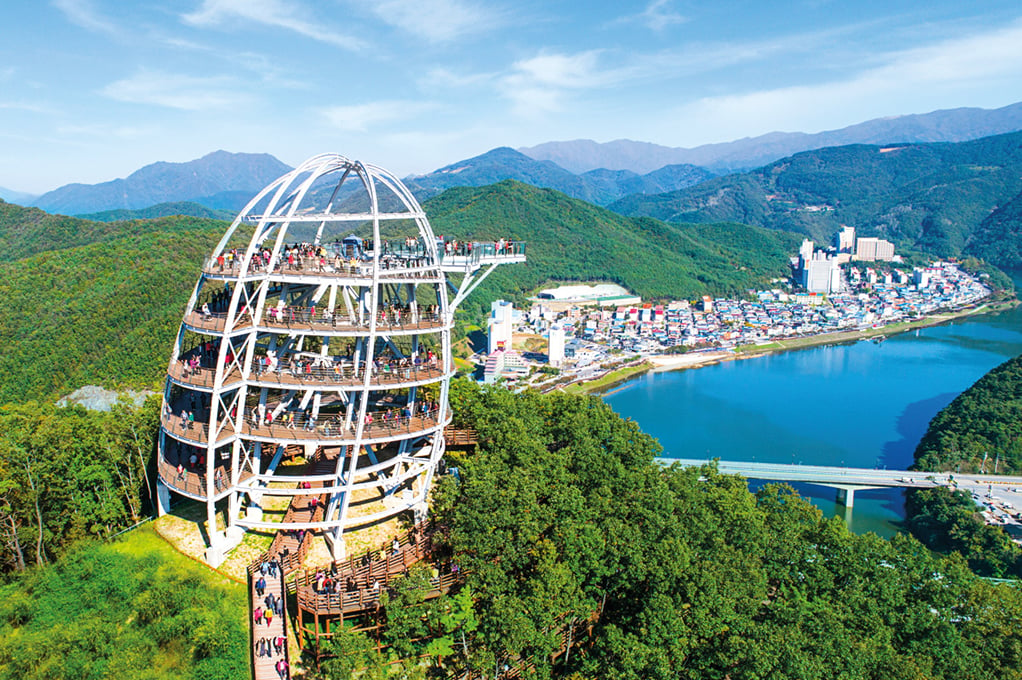
Mancheonha Skywalk is built 80–90 m above the surface of the Namhangang River, offering a thrilling experience of walking above the clouds while enjoying views of the famous Baekdudaegan Mountain Range. Along the cliffs of the Namhangang River, the Danyanggang Jando (plank road) Trail provides an opportunity to experience both the romance of trekking and an exhilarating thrill. Jeokseong-myeon, Danyang-gun, Chungcheongbuk-do -
- Chungcheongbuk-do
- Beopjusa Temple / Songnisan Theme Park
- Chungcheongbuk-do
- Beopjusa Temple / Songnisan Theme Park
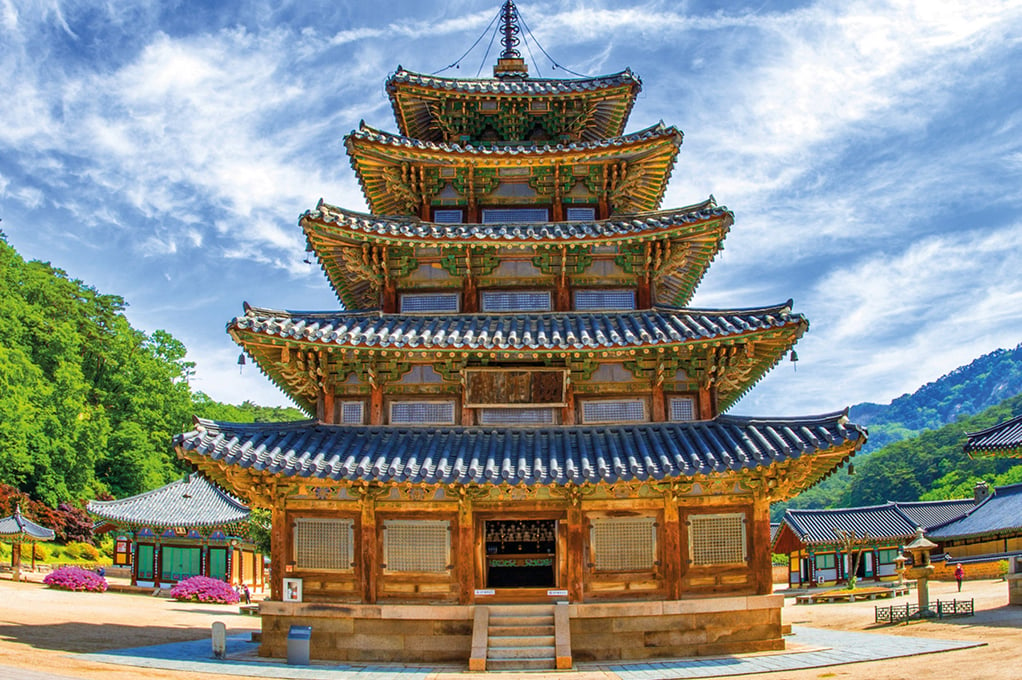
Beopjusa Temple is a significant Korean Buddhist cultural site, home to numerous cultural heritage treasures. It was inscribed as a UNESCO World Heritage site in 2018. Songnisan Theme Park is a nature-friendly, stay-oriented tourist complex featuring forest leis ure facilities such as zip lines and monorails, along with the Songnisan Forest Experience Resort Village. Songnisan-myeon, Boeun-gun, Chungcheongbuk-do -
- Chungcheongbuk-do
- Cheongpungho Lake
- Chungcheongbuk-do
- Cheongpungho Lake
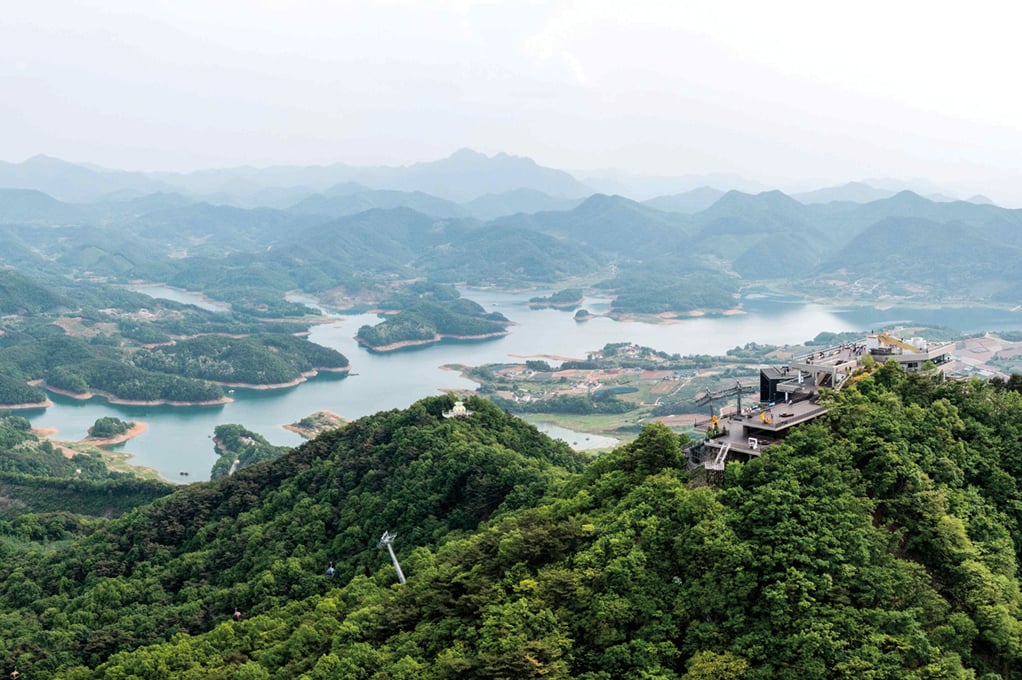
Known as the "inland sea," this vast lake is surrounded by beautiful Woraksan and Geumsusan Mountains, offering unique charms throughout the four seasons. The area around the lake is home to various tourist attractions, including the Cheongpung Cable Car, Cheongpung Cultural Heritage Complex, and Cheongpung Land. Cheongpung-myeon, Jecheon-si, Chungcheongbuk-do -
- Chungcheongbuk-do
- Cheongnamdae Presidential Villa
- Chungcheongbuk-do
- Cheongnamdae Presidential Villa
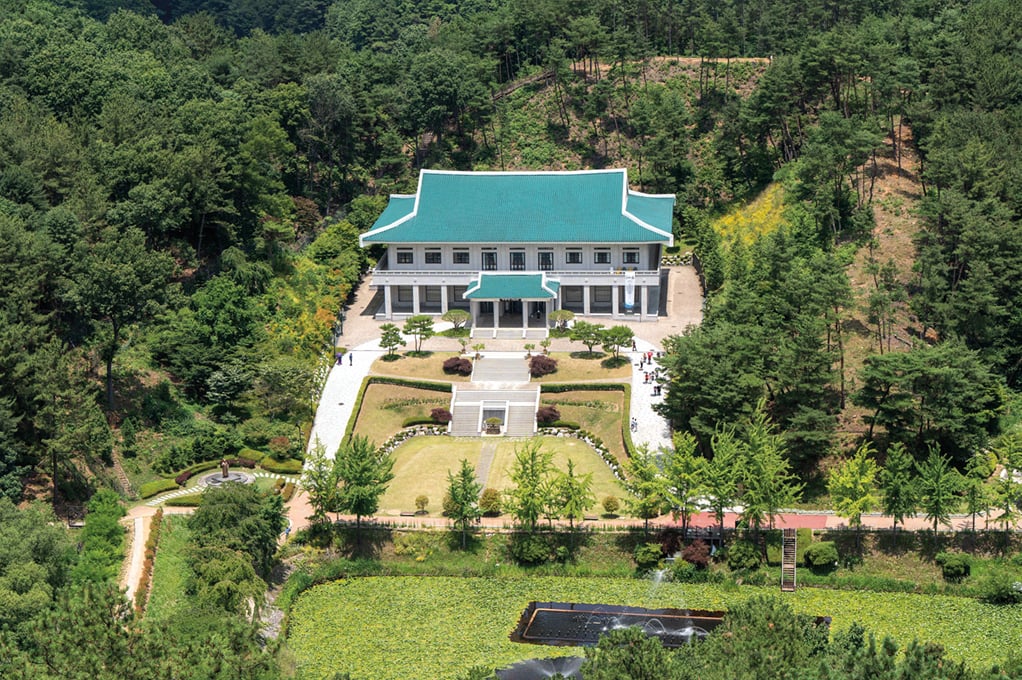
Cheongnamdae, meaning "Cheongwadae in the warm south," served as the official villa for South Korea's presidents for over 20 years, starting in 1983. It was opened to the public in 2003, allowing visitors to enjoy various facilities, including the main building, as well as the beautiful scenery. Sangdang-gu, Cheongju-si, Chungcheongbuk-do -
- Chungcheongnam-do
- Baekje Historic Areas in Gongju (Gongsanseong Fortress, Tomb of King Muryeong and Royal Tombs)
- Chungcheongnam-do
- Baekje Historic Areas in Gongju (Gongsanseong Fortress, Tomb of King Muryeong and Royal Tombs)
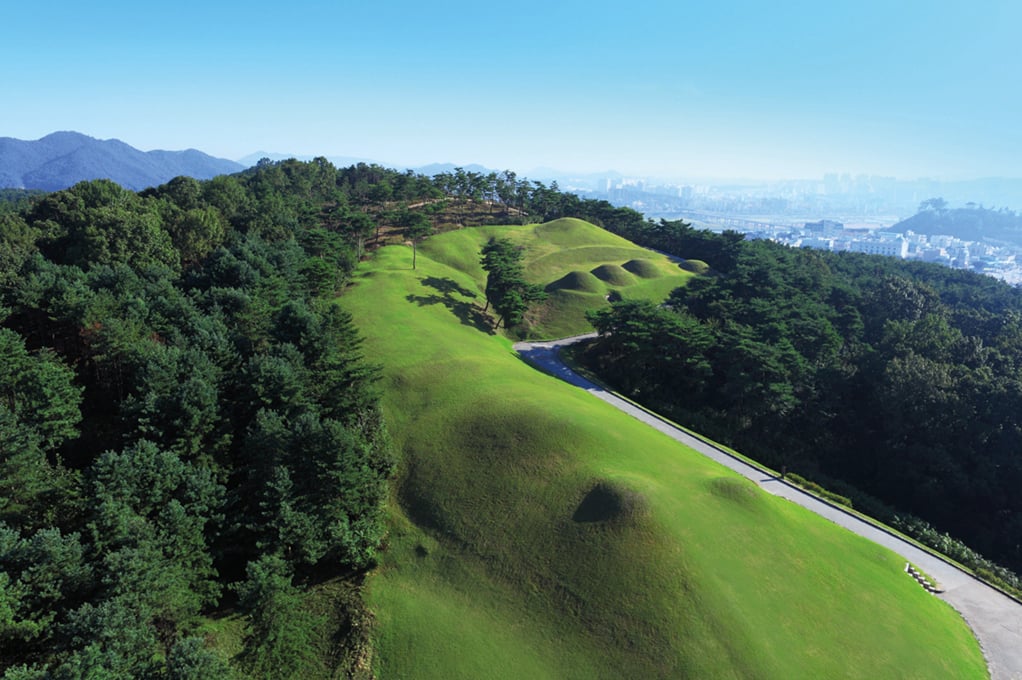
Gongsanseong Fortress is the royal fortress that represents Baekje's Ungjin period and a natural stronghold constructed by utilizing the Geumgang River and steep mountainous terrain. The Tomb of King Muryeong and Royal Tombs are the burial sites of the kings from Baekje's Ungjin-era. Among them, King Muryeong's Tomb holds significant value as its occupant and exact period have been clearly identified. Gongju-si, Chungcheongnam-do -
- Chungcheongnam-do
- Daecheon Beach
- Chungcheongnam-do
- Daecheon Beach
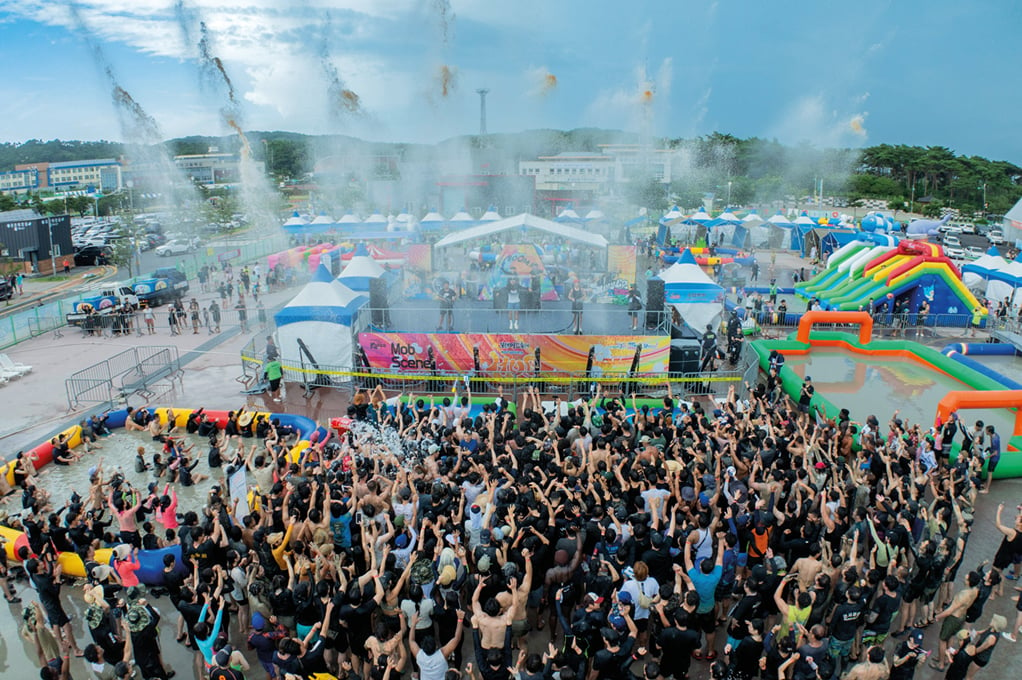
It is a representative beach on the west coast, with a sandy shore that stretches 3.5 km in length and 100 m in width. The sand, made of shell fragments, adds to the beach's unique charm. Visitors can enjoy various attractions, including the globally renowned Boryeong Mud Festival, as well as activities like sky bikes and zip lines. Boryeong-si, Chungcheongnam-do. -
- Chungcheongnam-do
- Baekje Historic Areas in Buyeo (Gungnamji Pond, Busosanseong Fortress)
- Chungcheongnam-do
- Baekje Historic Areas in Buyeo (Gungnamji Pond, Busosanseong Fortress)
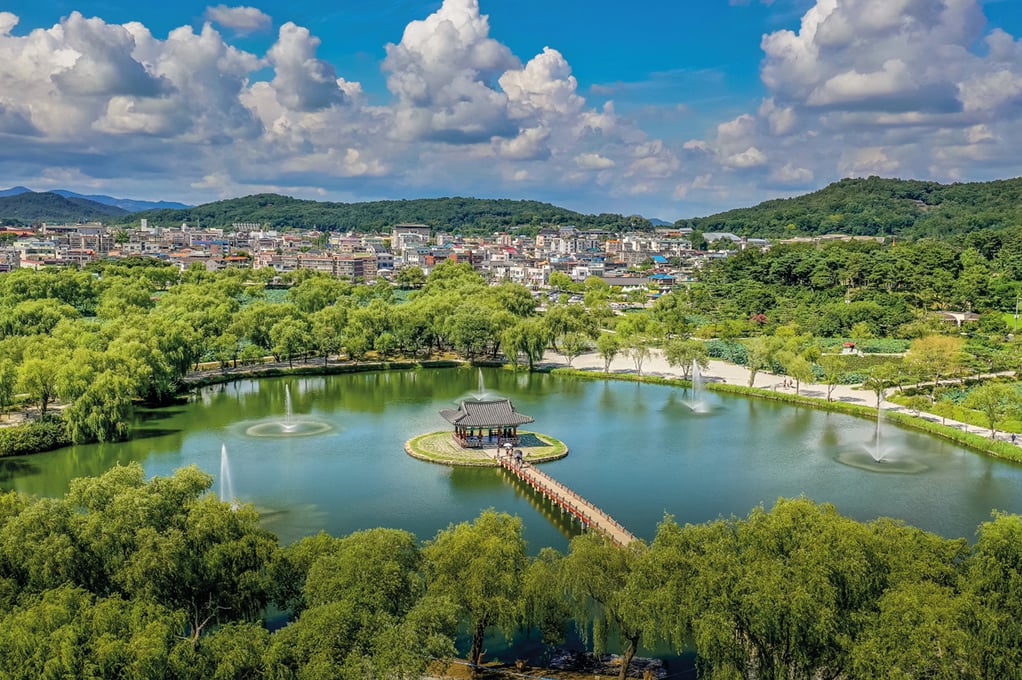
Gungnamji Pond, located at Baekje's secondary palace, is imbued with the legend of Seodongyo and hosts the Seodong Lotus Festival every July. Busosanseong Fortress was built to defend the capital during Baekje's Sabi period and is home to many historical sites, including building sites from the Baekje period, a military warehouse site, Nakhwaam Cliff, and Sajaru Pavilion. Buyeo-eup, Buyeo-gun, Chungcheongnam-do -
- Chungcheongnam-do
- Haemieupseong Walled Town
- Chungcheongnam-do
- Haemieupseong Walled Town
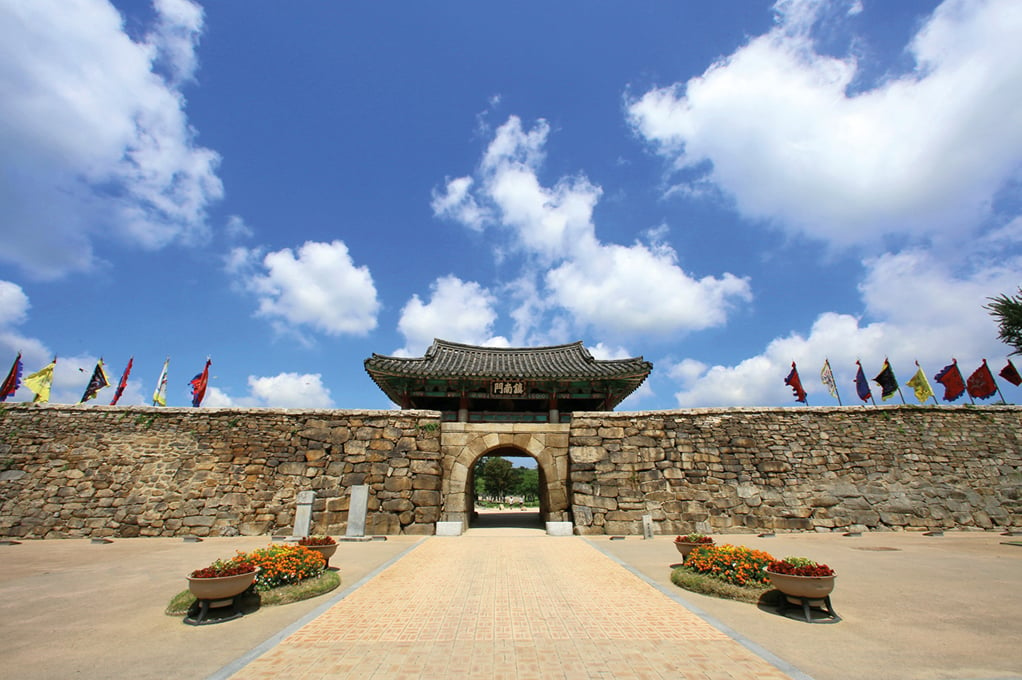
Built as a military fortress during the early Joseon period, Haemieupseong Walled Town is considered one of the best-preserved walled towns from that era. It is notable for its history as the site where Admiral Yi Sun-sin served as a military officer and as a place of Catholic persecution during the late Joseon period. In August 2014, Pope Francis visited this historic site. Haemi-myeon, Seosan-si, Chungcheongnam-do -
- Chungcheongnam-do
- Hyeonchungsa Shrine
- Chungcheongnam-do
- Hyeonchungsa Shrine
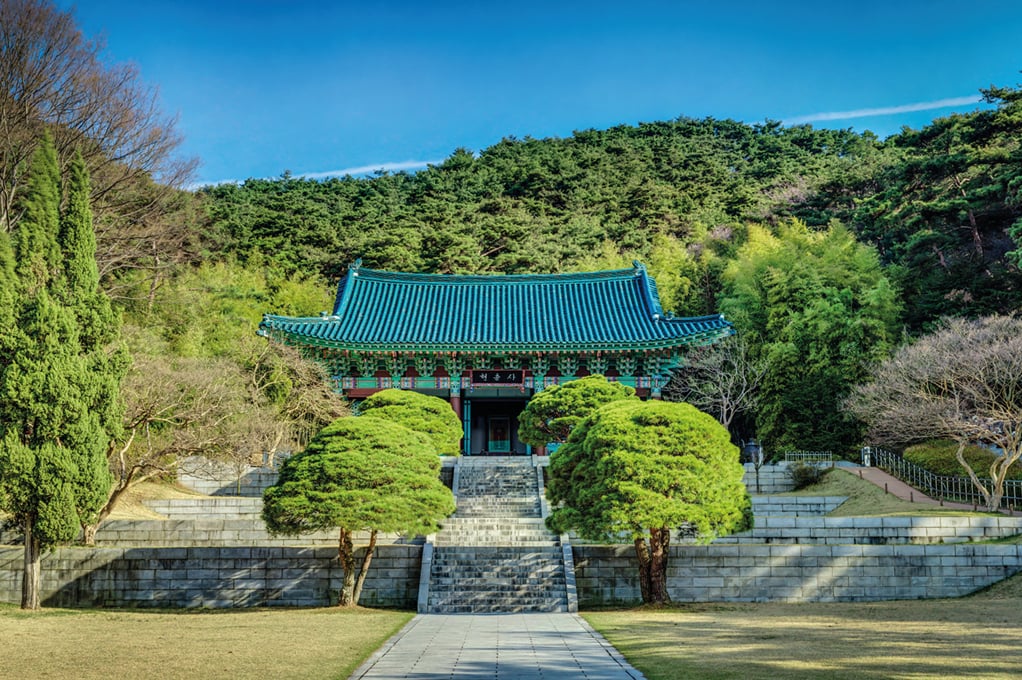
Hyeonchungsa Shrine, dedicated to Admiral Yi Sun-sin (posthumous title: Chungmugong), was originally built in 1706. In 1967, a national restoration project transformed it into its current form. Key facilities include the main hall, which houses Admiral Yi's portrait, his former residence, an archery range, and the Chungmugong Yi Sunsin Memorial Museum. Yeomchi-eup, Asan-si, Chungcheongnam-do -
- Chungcheongnam-do
- Yedang Tourist Area (Yedangho Suspension Bridge and Musical Fountain, Yedangho Monorail)
- Chungcheongnam-do
- Yedang Tourist Area (Yedangho Suspension Bridge and Musical Fountain, Yedangho Monorail)
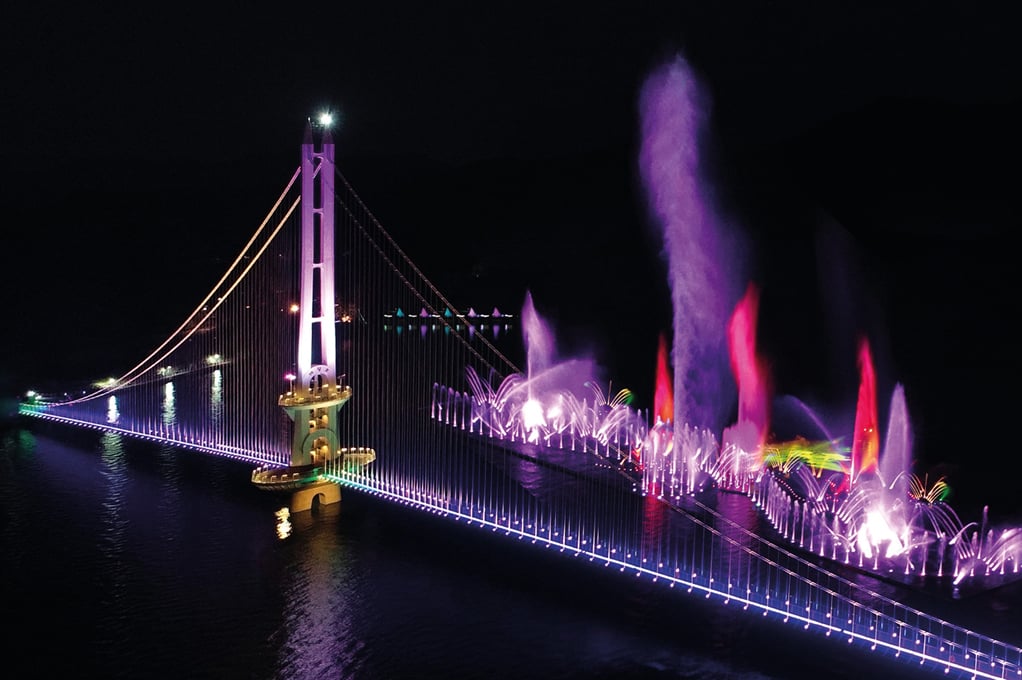
Located in the picturesque northwestern area of Yedang Reservoir, this national tourist area features a 402 m-long suspension bridge, a musical fountain, a monorail, walking trails, and camping facilities. Equipped with vibrant nighttime lighting, it is also a popular spot for enjoying stunning night views. Eungbong-myeon, Yesan-gun, Chungcheongnam-do -
- Chungcheongnam-do
- The Independence Hall of Korea
- Chungcheongnam-do
- The Independence Hall of Korea
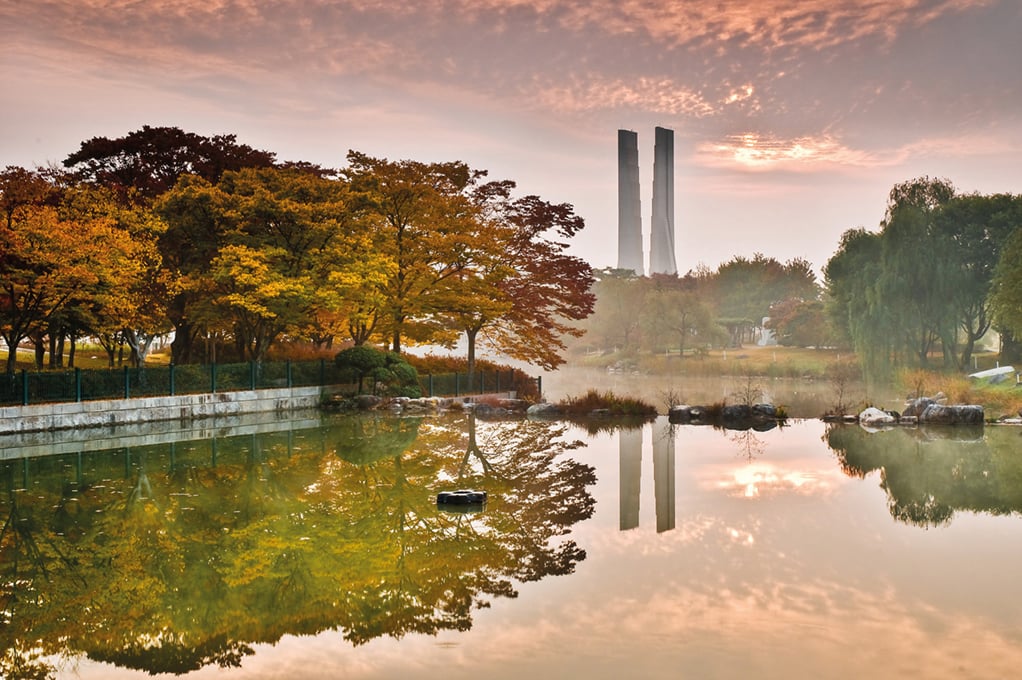
It is a space dedicated to collecting, preserving, researching, and exhibiting materials related to the nation's history of overcoming crises and its development. It features permanent exhibition halls, special exhibition halls, experience halls, and a theater, offering visitors a comprehensive opportunity to learn about and engage with the history of the independence movement. Dongnam-gu, Cheonan-si, Chungcheongnam-do -
- Chungcheongnam-do
- Kkotji Beach
- Chungcheongnam-do
- Kkotji Beach
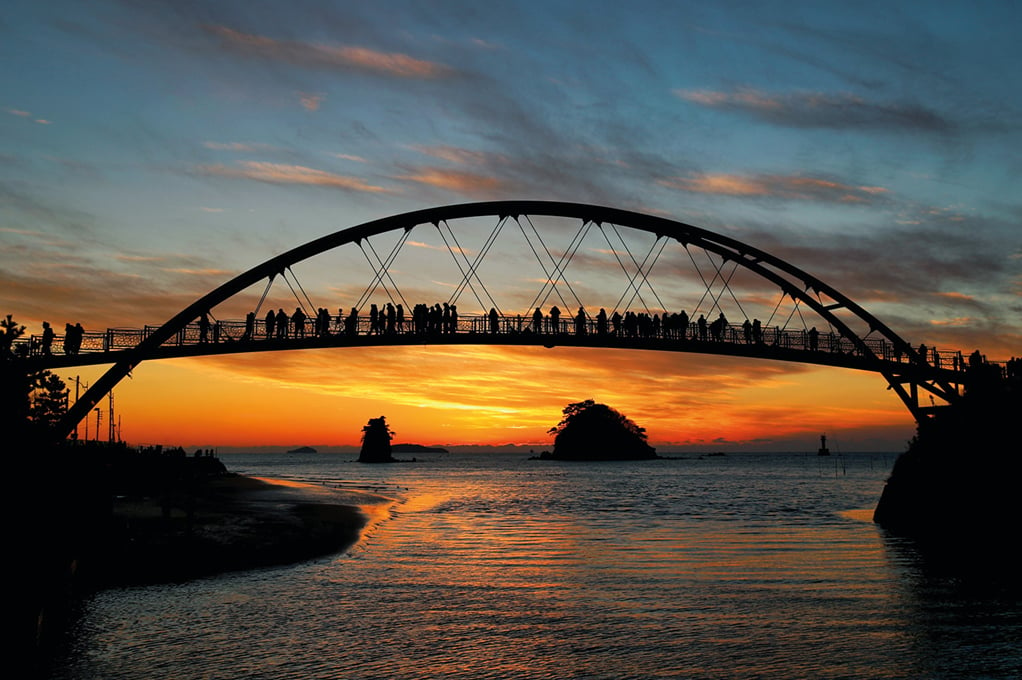
The beach earned its name, "Kkotji" (flower bloom), because of the abundance of rugosa roses blooming along the shore. It features a wide, clean sandy beach and various attractions such as Halmibawi and Harabibawi Rocks, Kkotji Coastal Park, and Infinity Studio. The stunning sunset, beautifully harmonizing with Halmibawi and Harabibawi Rocks, is a highlight. Anmyeon-eup, Taean-gun, Chungcheongnam-do -
- Gwangju
- National Asian Culture Center
- Gwangju
- National Asian Culture Center
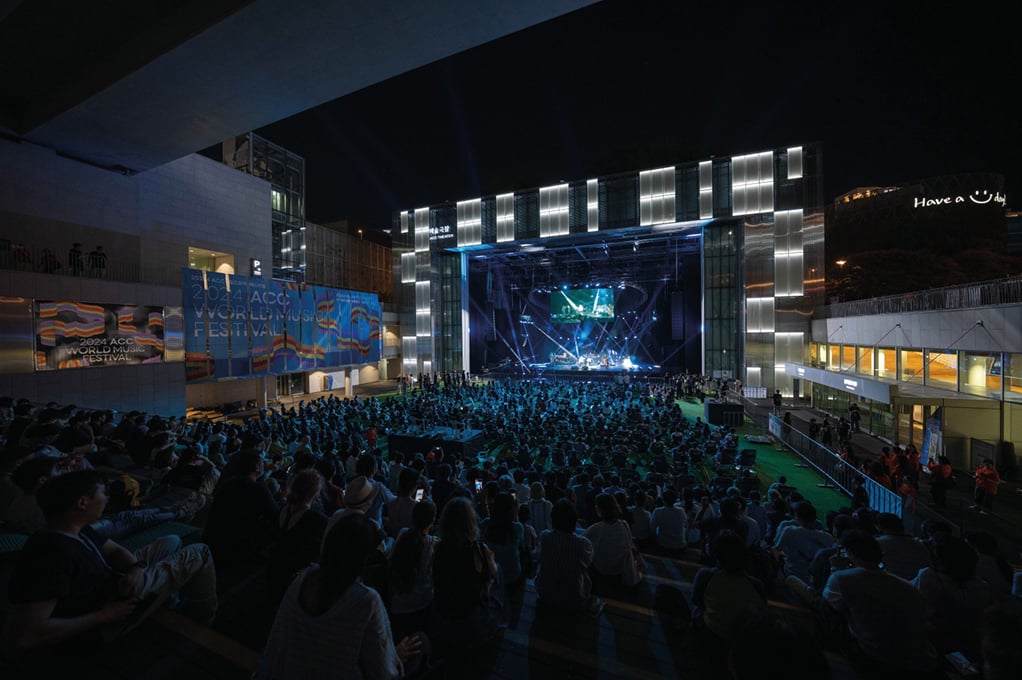
The National Asian Culture Center (ACC) is an international multicultural and artistic space that facilitates Asian cultural exchange, the collection and research of cultural resources, content creation, exhibitions, performances, and distribution. It consists of the ACC Archive & Research, ACC Creation, ACC Theater, ACC Children, and ACC Culture Exchange, and hosts various festivals and events throughout the year. Dong-gu, Gwangju -
- Gwangju
- Mudeungsan National Park
- Gwangju
- Mudeungsan National Park
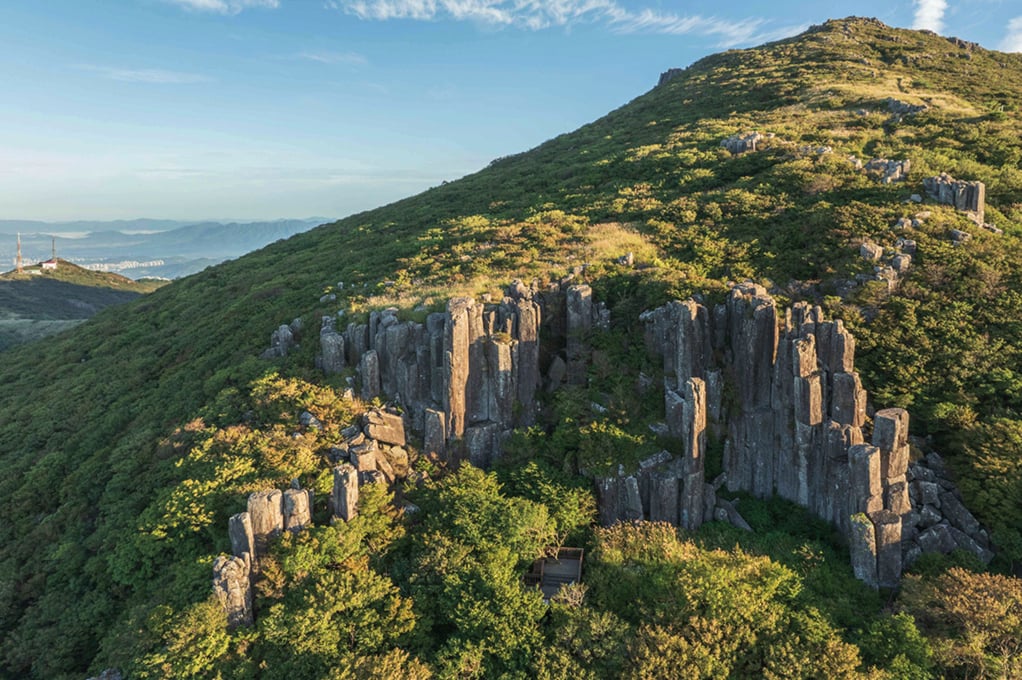
Located across Gwangju and Jeollanam-do (Hwasun and Damyang), it was designated as a national park in 2013. The park's highest peak, Cheonwangbong Peak (1,187 m), is surrounded by spectacular columnar joints (Natural Monument), and the park showcases distinct seasonal ecological landscapes, including azaleas, tiger lilies, autumn foliage, and winter snow. Dong-gu, Gwangju -
- Jeonbuk-do
- Namwon Tourist Complex / Gwanhalluwon Garden
- Jeonbuk-do
- Namwon Tourist Complex / Gwanhalluwon Garden
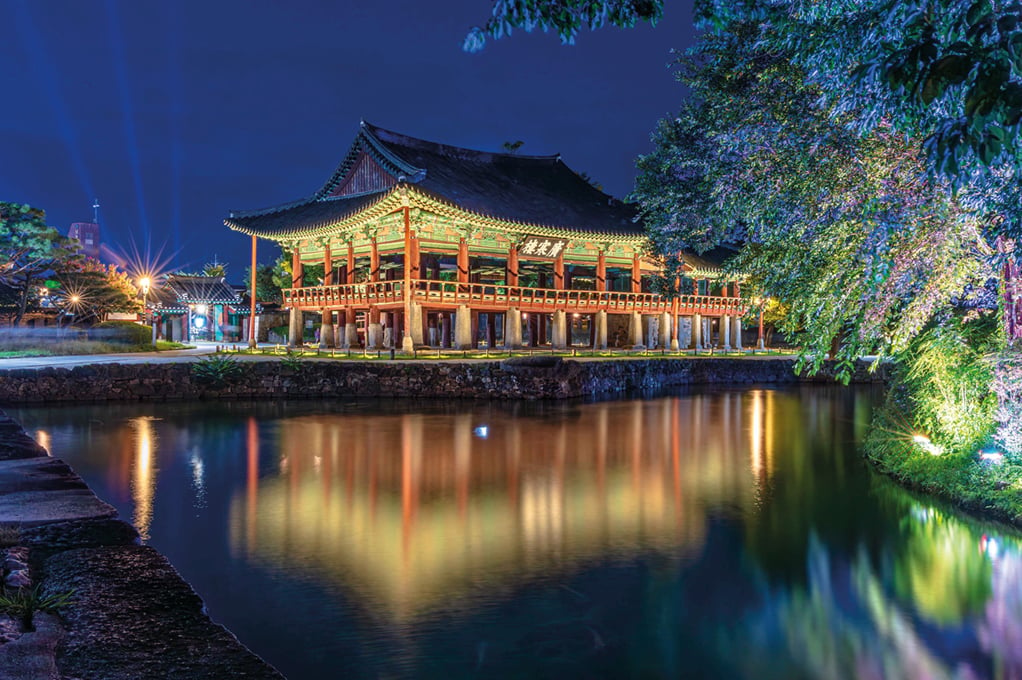
The Namwon Tourist Complex is a comprehensive tourism area that includes facilities such as Chunhyang Theme Park, Chunhyang Culture & Art Center, Namwon National Gukak Center, Namwon City Kim Byungjong Art Museum, and the Namwon Aircraft & Space Observatory. Gwanghalluwon Garden, famous as the setting for The Story of Chunhyang, is a representative garden from the Joseon period and has been designated as a Scenic Site. Namwon-si, Jeonbuk-do -
- Jeonbuk-do
- Bandi Land / Taekwondowon
- Jeonbuk-do
- Bandi Land / Taekwondowon
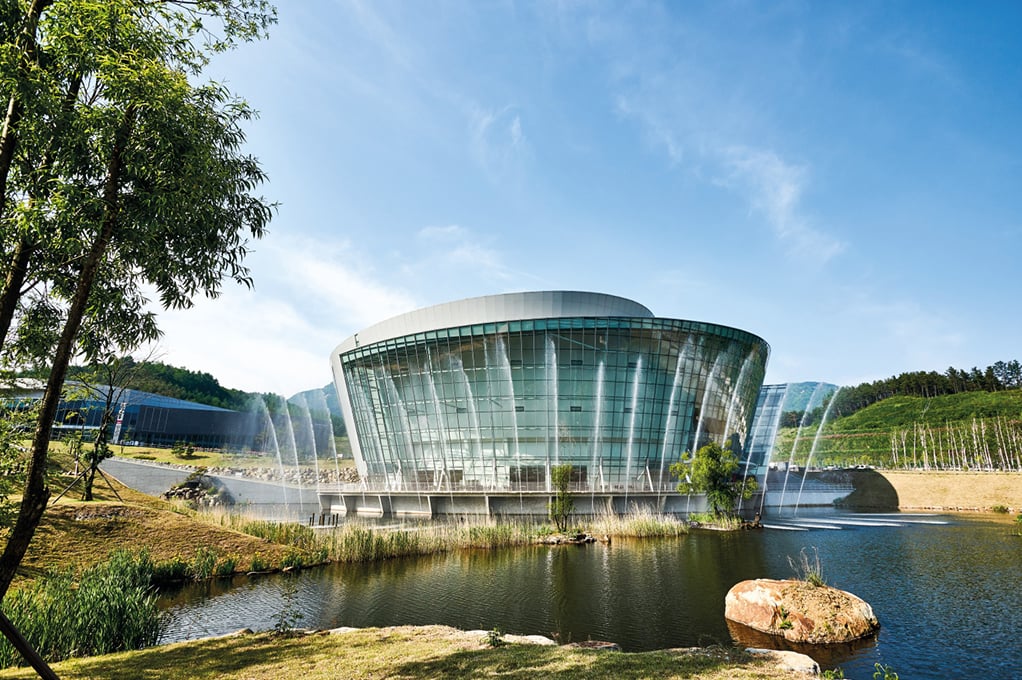
Bandi Land is a space for observation, experience, education, and recreation. It consists of Insect Museum, Astronomical Science Museum, Youth Training Center, Environmental Theme Park, log cabins, and a camping site. Taekwondowon offers various attractions, including Taekwondo experience programs, demonstration performances, an observatory, a monorail, and Playwon. Seolcheon-myeon, Muju-gun, Jeonbuk-do -
- Jeonbuk-do
- Byeonsanbando National Park
- Jeonbuk-do
- Byeonsanbando National Park
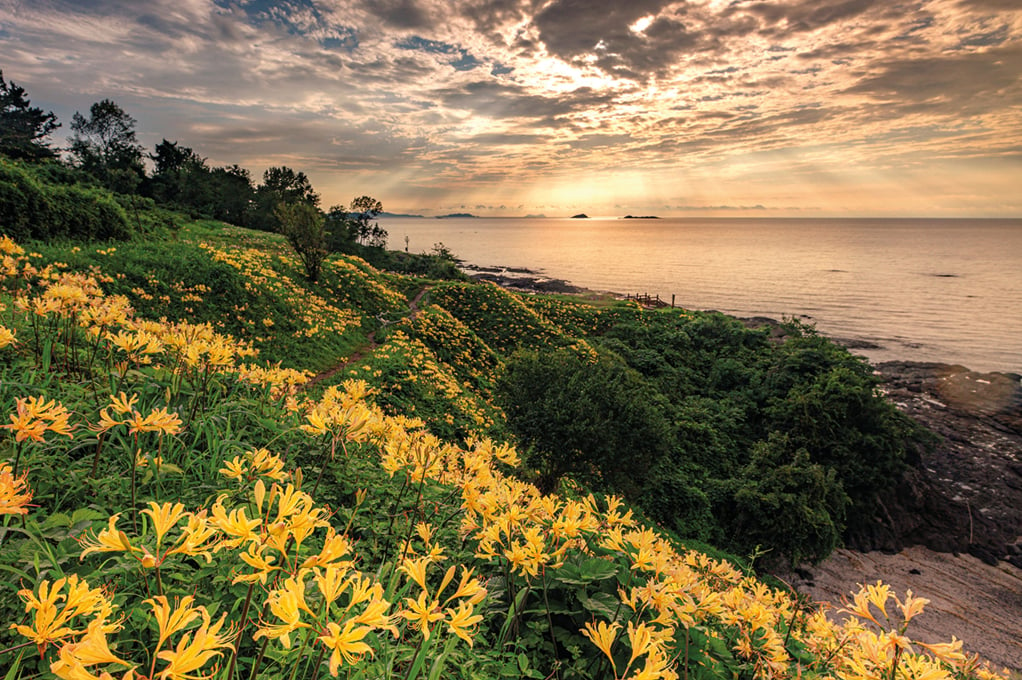
Byeonsanbando National Park is the only peninsula-shaped national park in South Korea, encompassing both land and sea, where natural resources and historical-cultural assets harmonize. It offers various attractions, including Naesosa Temple, Jiksopokpo Falls, and Uisangbong Peak in the inner part of the Byeonsanbando Peninsula, as well as Chaeseokgang Cliff, Jeokbyeokgang River, and more in the outer part of the peninsula. Byeonsan-myeon, Buan-gun, Jeonbuk-do -
- Jeonbuk-do
- Gangcheonsan County Park
- Jeonbuk-do
- Gangcheonsan County Park
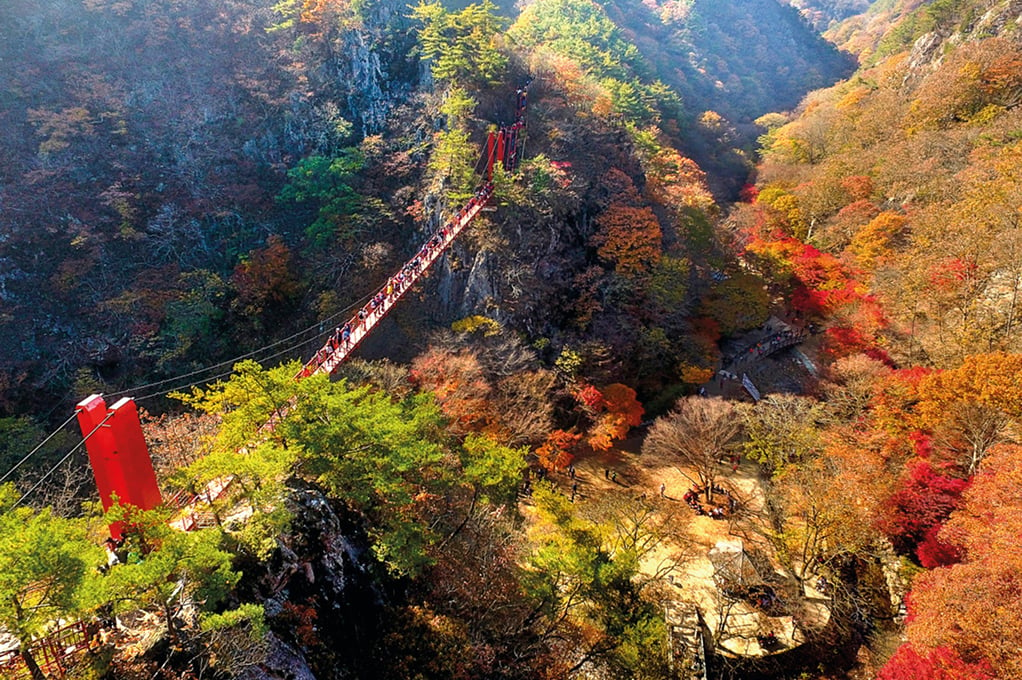
Gangcheonsan County Park, known as the "Little Geumgang of Honam," is celebrated for its beautiful harmony of valleys, unique rock formations, and cliffs. Designated as Korea's first county park in 1981, it offers unique attractions throughout the year, including flowers in spring, waterfalls and valleys in summer, autumn foliage, and winter snow scenes. Paldeok-myeon, Sunchang-gun, Jeonbuk-do -
- Jeonbuk-do
- Oseong Hanok Village
- Jeonbuk-do
- Oseong Hanok Village
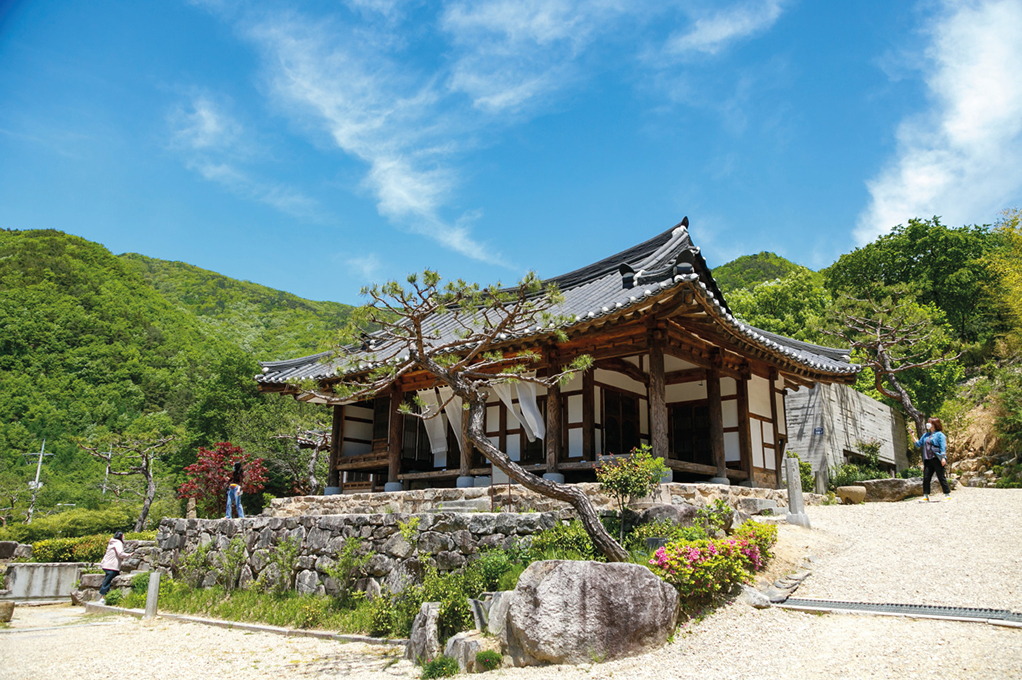
Oseong Hanok Village is set in a stunning natural environment, surrounded by the majestic Jongnamsan and Wibongsan mountains. It features around 20 traditional hanok houses and offers a blend of unique cafés, galleries, walking trails, and other experiential spaces. This village is a popular healing destination, where visitors can enjoy a relaxing time immersed in tradition, culture, and nature. Soyang-myeon, Wanju-gun, Jeonbuk-do -
- Jeonbuk-do
- Jeonju Hanok Village
- Jeonbuk-do
- Jeonju Hanok Village
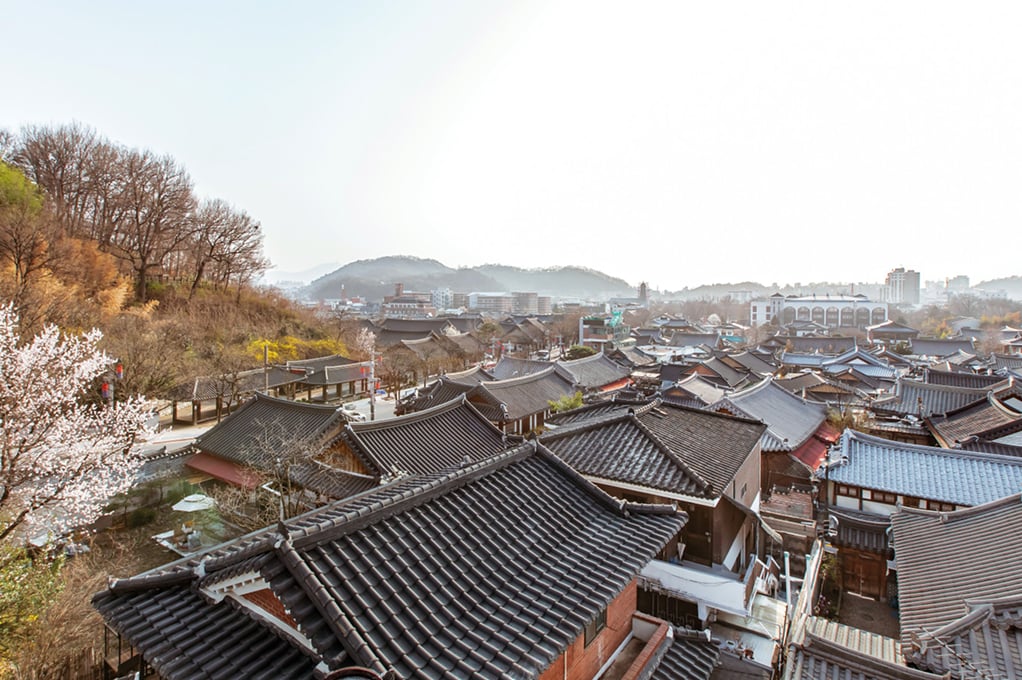
Jeonju Hanok Village is Korea's largest traditional hanok village, featuring over 700 hanok houses. Visitors can explore national heritage sites such as Gyeonggijeon Shrine, Omokdae Historic Site, and a local Confucian school, as well as various cultural facilities. The village offers a wide range of experiences in traditional Korean culture, including hanok architecture, Korean cuisine, hanji (Korean paper), hanbok (traditional Korean clothing), and traditional Korean medicine. Wansan-gu, Jeonju-si, Jeonbuk-do -
- Jeonbuk-do
- Naejangsan National Park
- Jeonbuk-do
- Naejangsan National Park
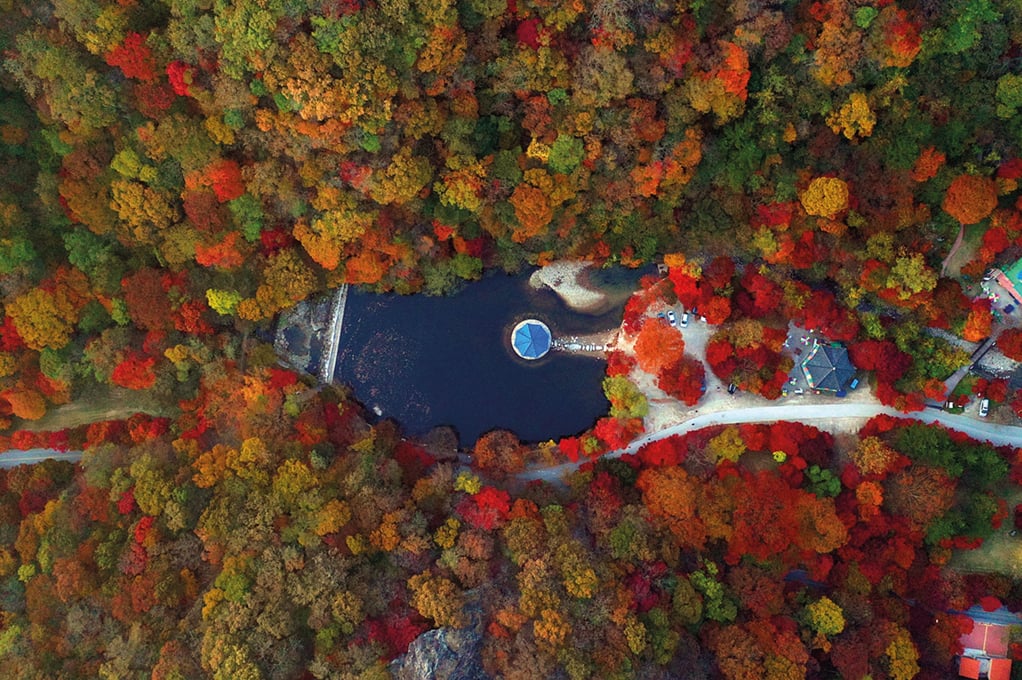
Naejangsan National Park is one of the five most famous mountains in Honam, renowned for its stunning views and historically referred to as the "Geumgang of Honam." The park is beautiful year-round, but it is especially famous for its autumn foliage. It features various attractions, including the Maple Tunnel, Naejangsa Temple, Byeongnyeonam Hermitage, Uhwajeong Pavilion, and the site preserving the Joseon wangjo sillok (Annals of the Joseon Dynasty). Jeongeup-si, Jeonbuk-do -
- Jeonbuk-do
- Maisan Provincial Park
- Jeonbuk-do
- Maisan Provincial Park
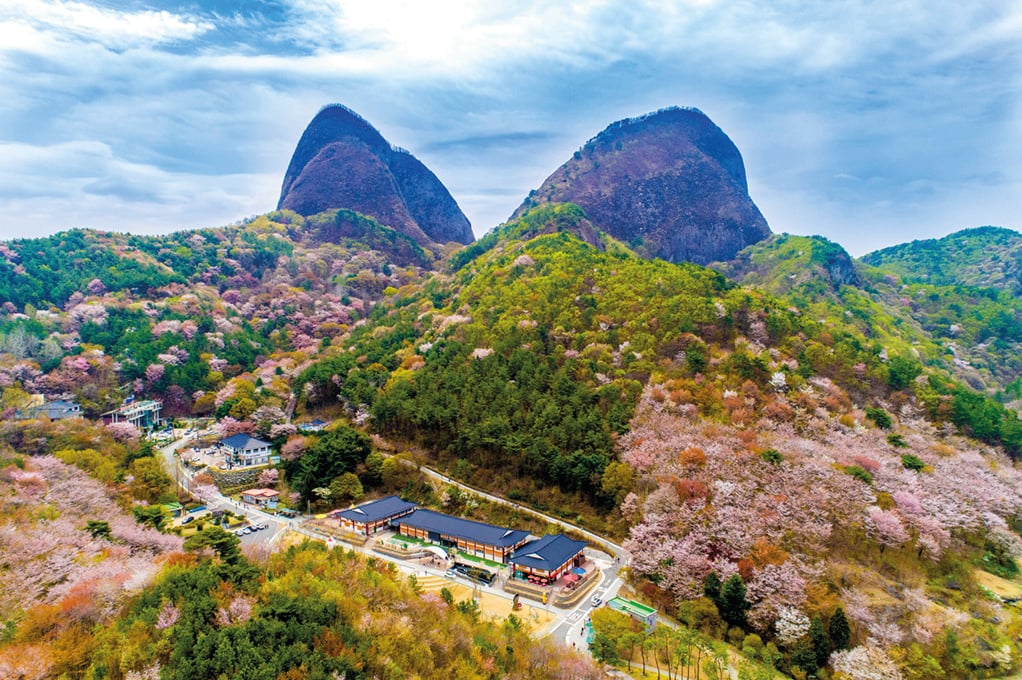
Ammaibong and Sunmaibong are the two peaks that make up Maisan Mountain, which is famous for its world-renowned tafoni rock formations and mysterious stone pagoda clusters. The area offers a variety of attractions, including ecological resources such as the Chinese Pear and the Population of Fortunes Creeping Spindles, which are the National Monuments, as well as facilities like the Mountain Herb Town and Red Ginseng Spa. Maryeong-myeon, Jinan-gun, Jeonbuk-do -
- Jeollanam-do
- Seomjingang Train Village
- Jeollanam-do
- Seomjingang Train Village
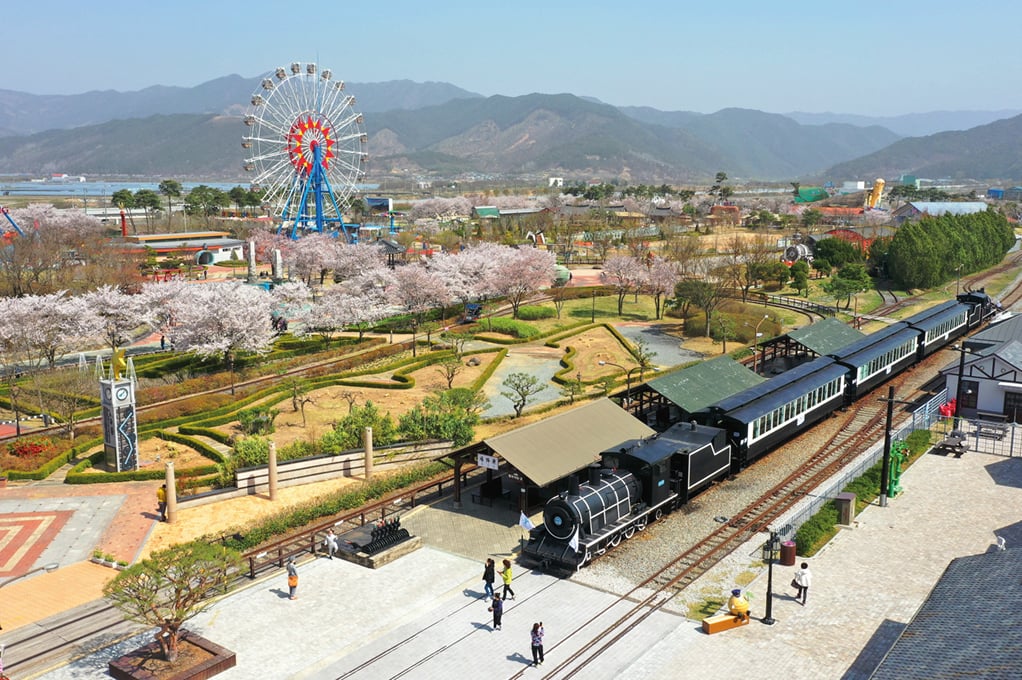
The former Gokseong Station building (National Registered Cultural Heritage), built in 1933, along with the decommissioned Jeolla Line, has been transformed into a themed tourist destination. It offers a variety of attractions, including a steam locomotive, rail bikes, an animal farm, a rose cacao experience center, and a rose park. Seasonal festivals are also held throughout the year. Ogok-myeon, Gokseong-gun, Jeollanam-do -
- Jeollanam-do
- Gwangyang Maehwa Village / Cheong Maesil Farm
- Jeollanam-do
- Gwangyang Maehwa Village / Cheong Maesil Farm
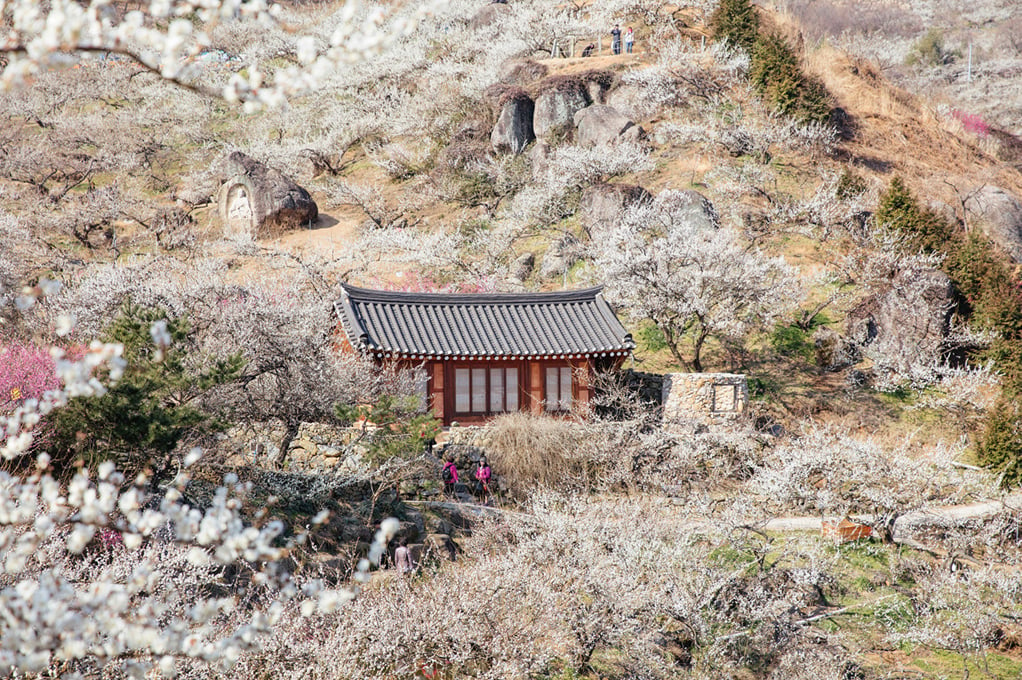
Gwangyang Maehwa Village is a famous spring flower spot, where plum blossoms and the Seomjingang River harmonize at the foot of Baegunsan Mountain. The Gwangyang Plum Blossom Festival is held annually here. At Cheong Maesil Farm, run by the renowned artisan Hong Ssang-ri, visitors can enjoy the sight of numerous jars filled with ripening plums and blooming plum trees. Daap-myeon, Gwangyang-si, Jeollanam-do -
- Jeollanam-do
- Juknokwon (Bamboo Garden) / Gwanbangjerim Forest
- Jeollanam-do
- Juknokwon (Bamboo Garden) / Gwanbangjerim Forest
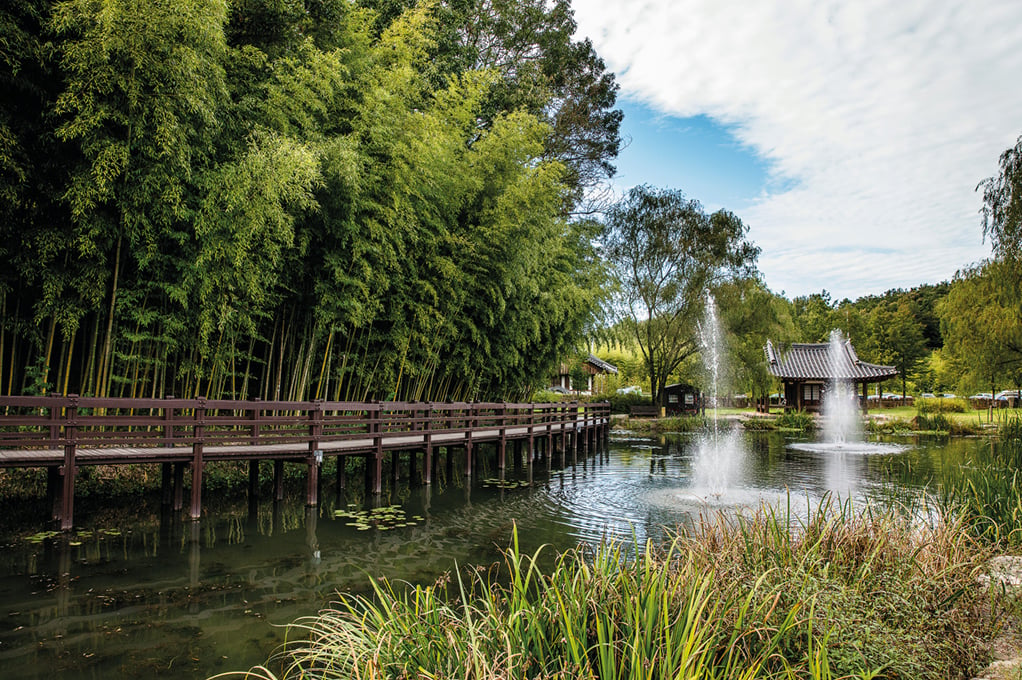
Juknokwon (Bamboo Garden), featuring a bamboo forest, offers eight themed walking trails, a foot bath experience area, and traditional hanok accommodations. Gwanbangjerim Forest, designated as a Natural Monument, is home to ancient and large trees such as muku trees, Japanese hackberries, cherry trees, and Yeddo hornbeams, creating a picturesque and tranquil forest landscape. Damyang-eup, Damyang-gun, Jeollanam-do -
- Jeollanam-do
- Mokpo Modern History and Culture Space / Mokpo Marine Cable Car
- Jeollanam-do
- Mokpo Modern History and Culture Space / Mokpo Marine Cable Car
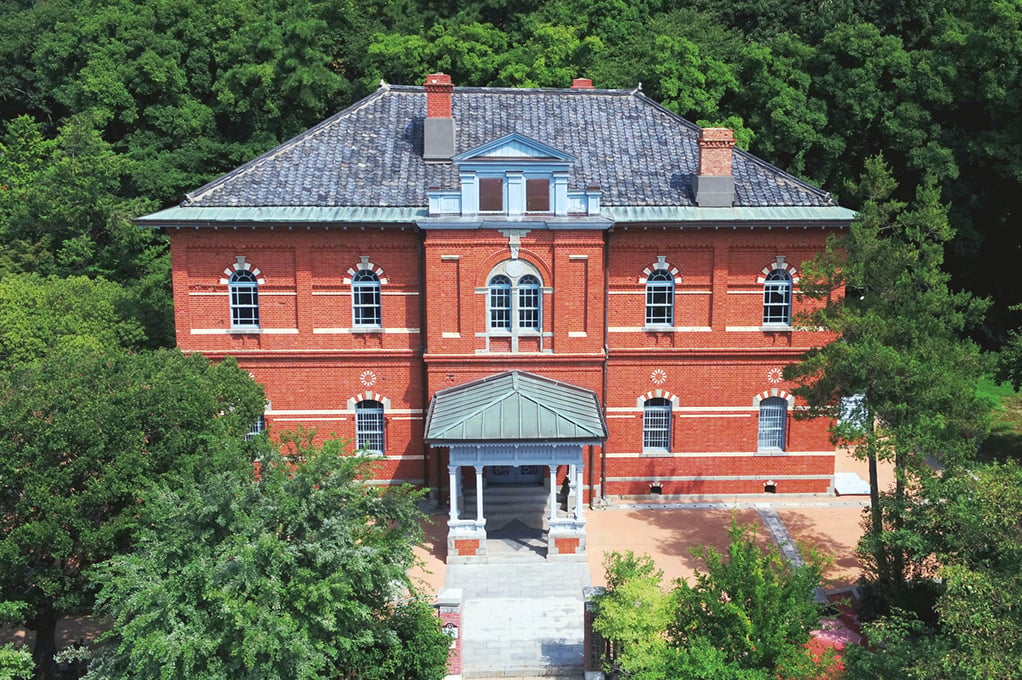
The Mokpo Modern History and Culture Space showcases the historical and cultural heritage from the Japanese occupation to the post-liberation era. The entire area was designated as a National Registered Cultural Heritage. The Mokpo Marine Cable Car, stretching 3.23 km, offers stunning views of the Dadohae Archipelago, sunsets, and the Mokpodaegyo Bridge at night. Mokpo-si, Jeollanam-do -
- Jeollanam-do
- Suncheonman National Garden / Suncheonman Wetland
- Jeollanam-do
- Suncheonman National Garden / Suncheonman Wetland
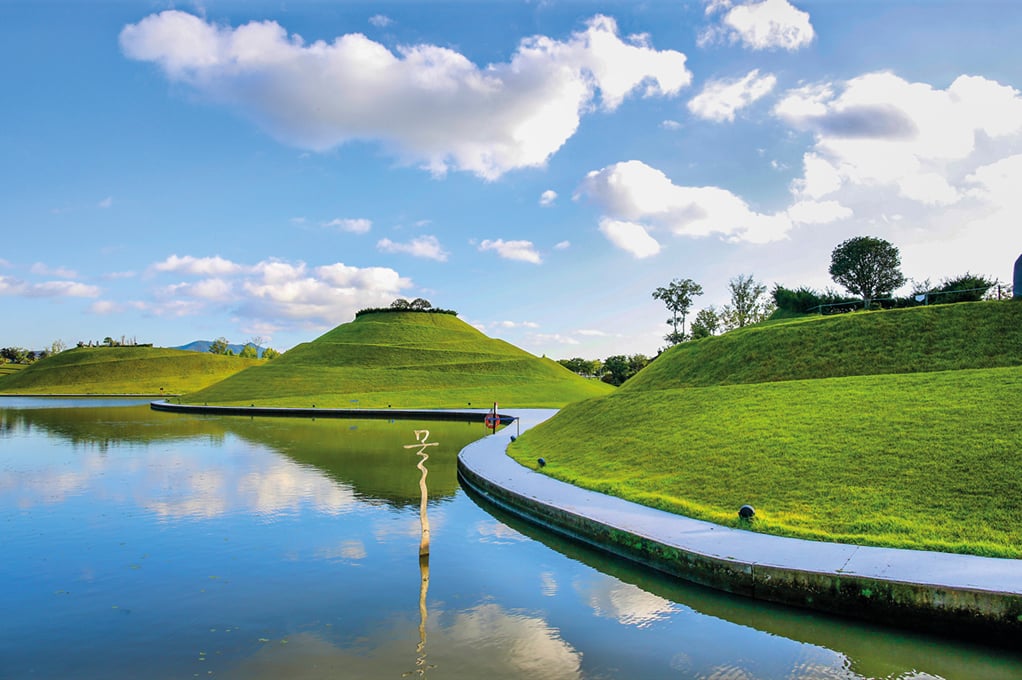
Suncheonman National Garden and Suncheonman Wetland are representative natural and ecological tourist destinations in Korea, where nature and humans coexist harmoniously. The garden highlights the beauty of various plants throughout the four seasons, while the wetland serves as a habitat for many species, including endangered ones, showcasing the marvels of ecology. Suncheon-si, Jeollanam-do -
- Jeollanam-do
- Purple Island
- Jeollanam-do
- Purple Island
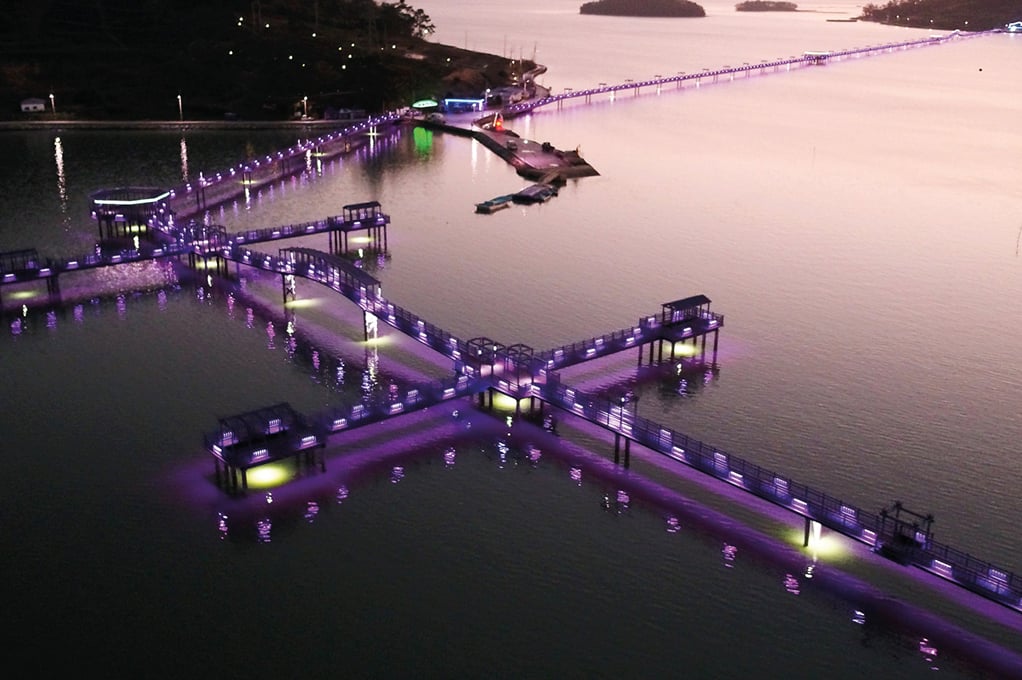
Purple Island, inspired by the concept of "an island where purple flowers bloom in all four seasons," is adorned with various plants and purple-themed facilities throughout the island. It offers numerous attractions, including the Purple Bridge, which connects Duri, Bakjido Island, and Banwoldo Island; the Moon Bridge; and seasonal festivals. In 2021, it was selected as one of the "Korea Tourism Awards" winners. Anjwa-myeon, Sinan-gun, Jeollanam-do -
- Jeollanam-do
- Expo Ocean Park
- Jeollanam-do
- Expo Ocean Park
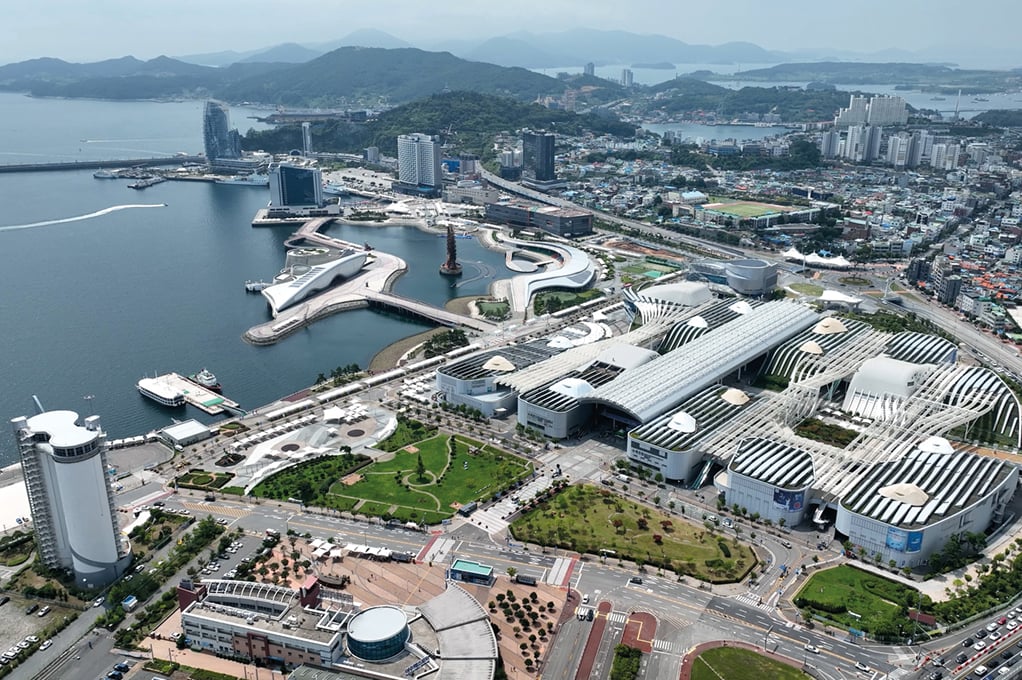
After the 2012 Expo in Yeosu, Korea, the Expo site was transformed into a marine leisure tourism destination. It features the world's only Big-O show, along with attractions such as the Sky Tower, Aqua Planet, and various accommodations. Yeosu-si, Jeollanam-do -
- Jeollanam-do
- Jeongnamjin Cypress Forest Woodland
- Jeollanam-do
- Jeongnamjin Cypress Forest Woodland
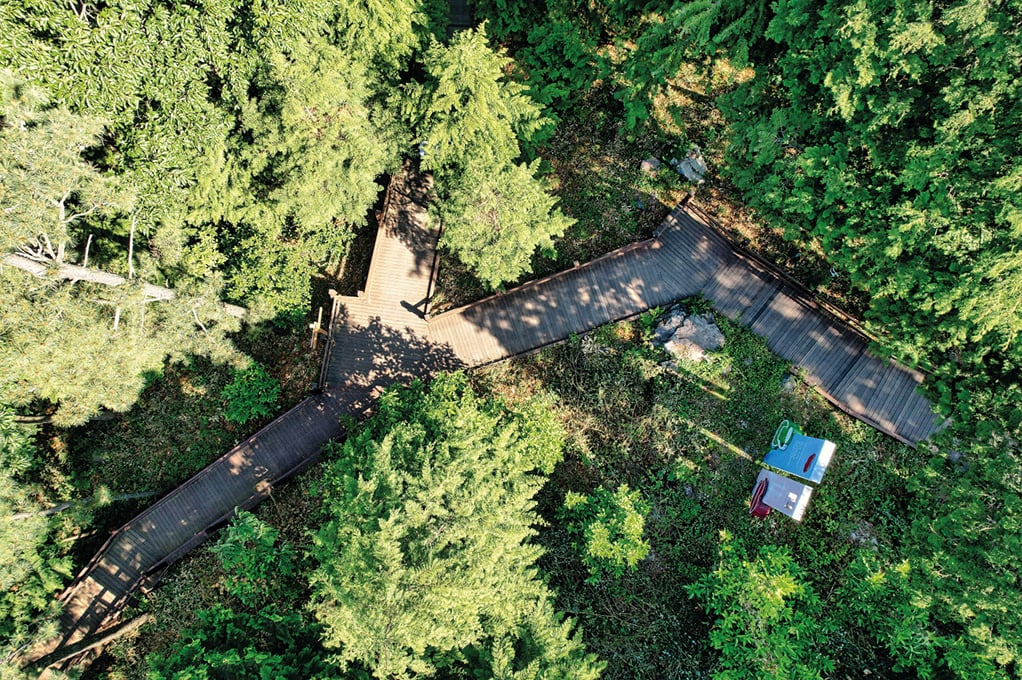
Jeongnamjin Cypress Forest Woodland is nestled in a vast forest filled with cypress trees. It offers various forest experience spaces, including a subtropical plant garden, a negative ion waterfall, a healing forest, a wood culture experience hall, and ecological experience pensions. A standout feature is the Cypress Salt House, a thermal healing facility utilizing cypress and sun-dried salt. Jangheung-eup, Jangheung-gun, Jeollanam-do -
- Busan
- Gamcheon Culture Village
- Busan
- Gamcheon Culture Village
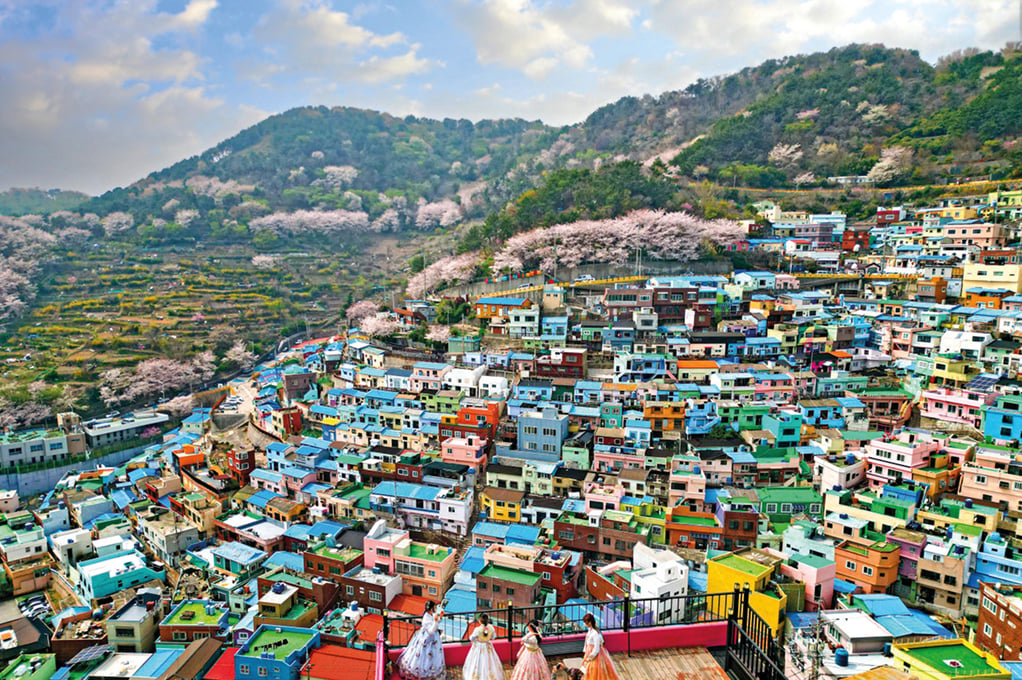
Gamcheon Culture Village was formed by refugees from the Korean War. The unique terraced housing along the mountain slopes and the maze-like alleys create a distinctive atmosphere. With its historical value and spatial characteristics, the village has been transformed into a cultural village, becoming a popular tourist destination. Saha-gu, Busan -
- Busan
- Gwangallihaebyeon Beach / SUP Zone
- Busan
- Gwangallihaebyeon Beach / SUP Zone
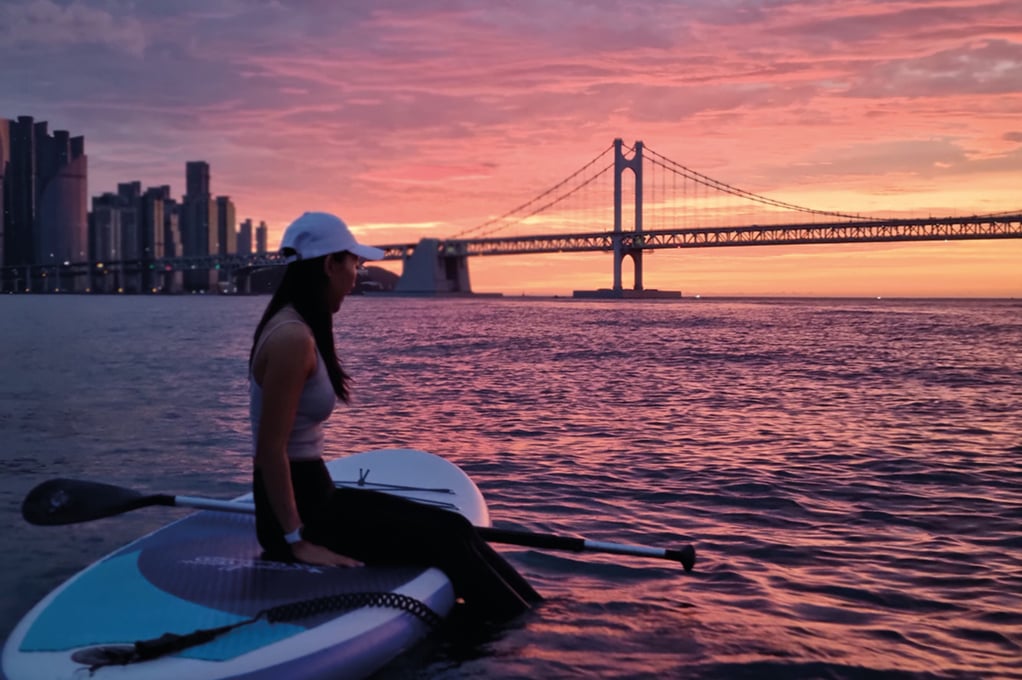
Gwangallihaebyeon Beach, a representative urban beach in Busan, offers a variety of attractions, including the iconic Gwangandaegyo Bridge, a café street, and the permanent "M Drone Light Show." The beach also features a designated SUP zone, providing lessons for different skill levels, as well as various marine programs like surf yoga. Suyeong-gu, Busan -
- Busan
- BUSAN X the Sky / Green Railway
- Busan
- BUSAN X the Sky / Green Railway
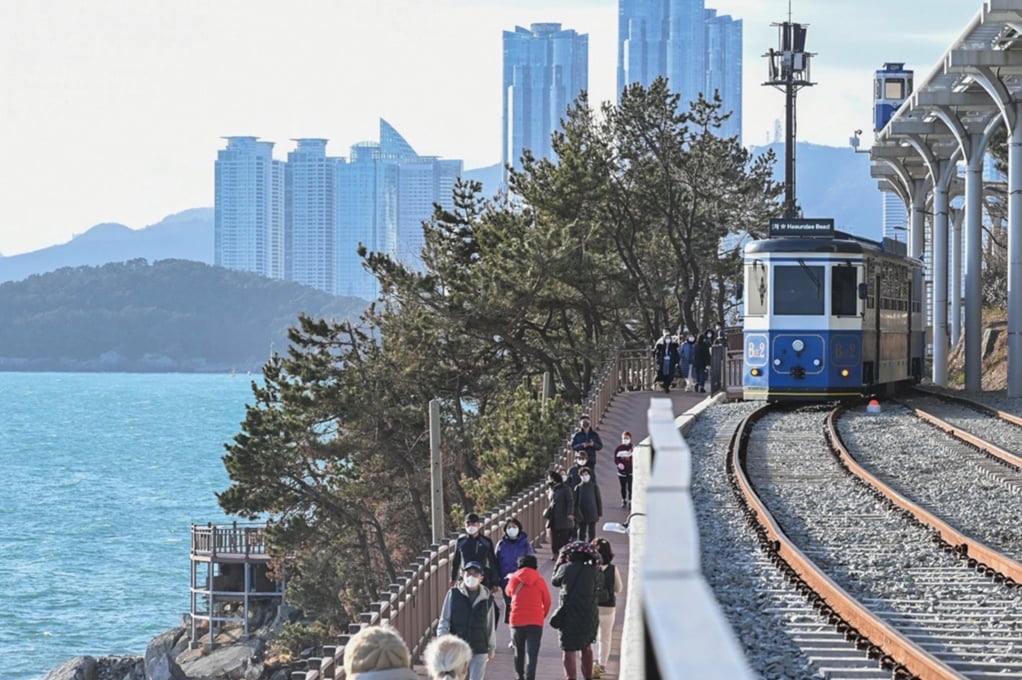
BUSAN X the Sky is located on the 1st floor and 98th to 100th floors of LCT The Sharp Landmark Tower, the tallest building in Busan. It features an observation deck, cafés, restaurants, and other facilities. The Green Railway is a 9.8 km urban walking trail along the coastline, created by revitalizing the former Donghae Nambu Line. Haeundae-gu, Busan -
- Busan
- Taejongdae Park
- Busan
- Taejongdae Park
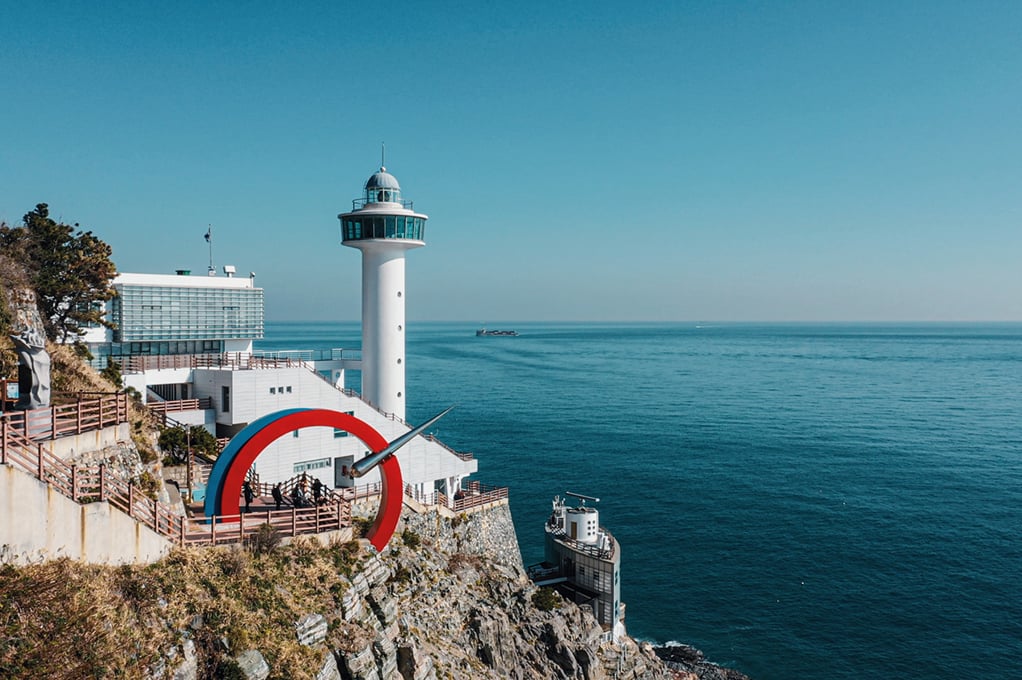
Taejongdae Park, a representative coastal landmark in Busan, is famous for its dense pine forest and towering cliffs. It has been designated as a Scenic Site and a National Geopark. The park offers various attractions, including an observation deck, Taejongsa Temple, Yeongdo Lighthouse, and the Danubi Train, which circulates Taejongdae. Yeongdo-gu, Busan -
- Busan
- Haedong Yonggungsa Temple / OSIRIA Tourist Complex
- Busan
- Haedong Yonggungsa Temple / OSIRIA Tourist Complex
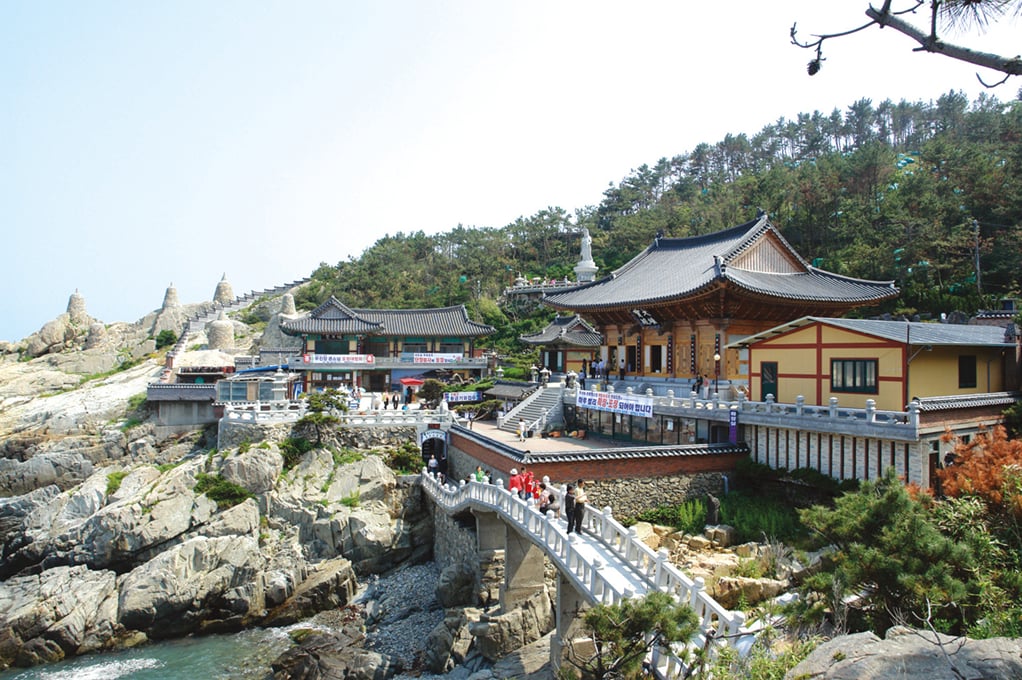
Haedong Yonggungsa Temple, believed to have been founded during the Goryeo period, attracts many visitors year-round from home and abroad due to its unique coastal setting and scenic beauty. The OSIRIA Tourist Complex, located nearby, is home to various entertainment facilities, including Lotte World, as well as accommodations and commercial establishments. Gijang-eup, Gijang-gun, Busan -
- Busan
- Haeundae Beach / Songjeong Beach
- Busan
- Haeundae Beach / Songjeong Beach
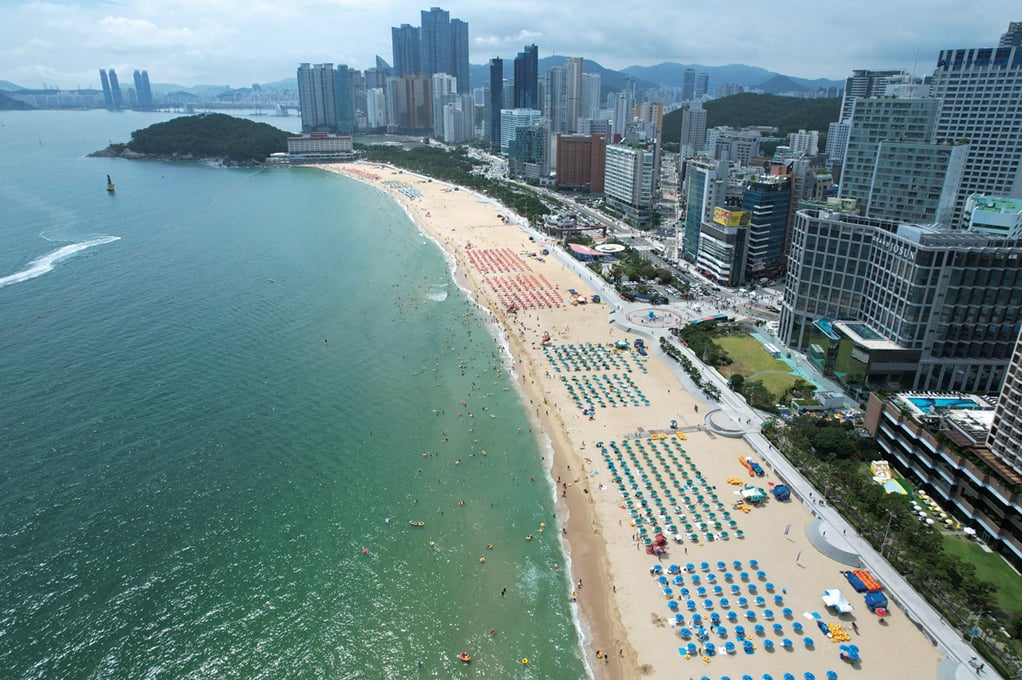
Haeundae Beach is a popular year-round destination, attracting visitors with its sophisticated skyline, vibrant nightlife, and various festivals. Songjeong Beach, known for its natural beauty, is cherished as a surfing hub in Busan. Haeundae-gu, Busan -
- Daegu
- Sayuwon
- Daegu
- Sayuwon
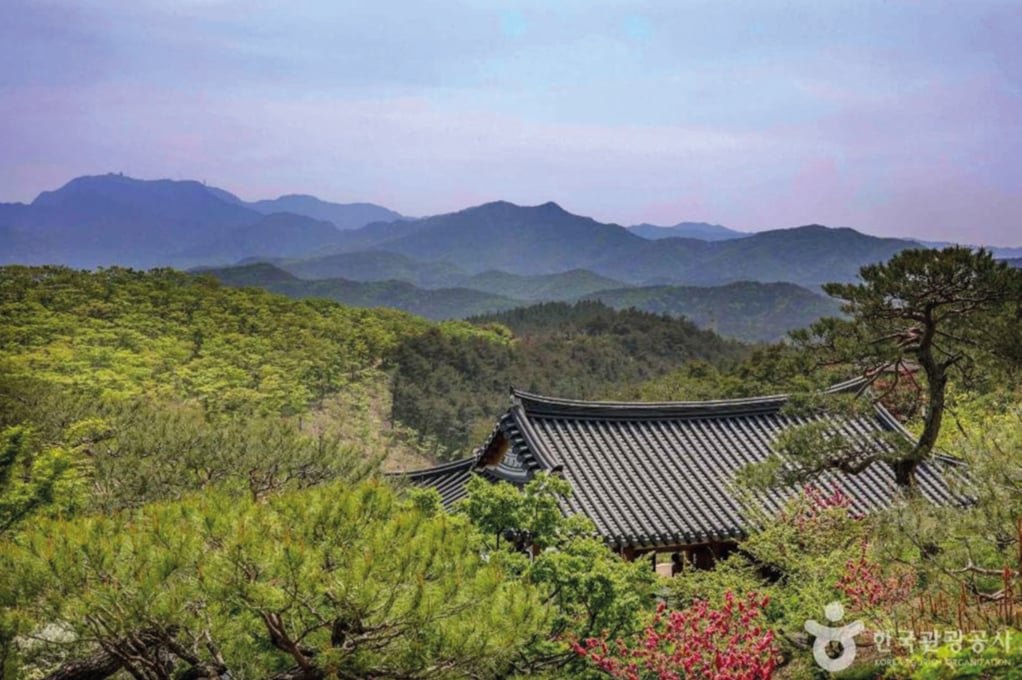
Sayuwon is a botanical garden, mountain garden, and space for contemplation. Over the years, the founder has cultivated the garden, and with the collaboration of renowned architects such as Álvaro Siza and Seung Hyo-sang, as well as landscapers and artists, it has transformed into a true garden of reflection. Bugye-myeon, Gunwi-gun, Daegu -
- Daegu
- Seomun Market / Dongseongno Street
- Daegu
- Seomun Market / Dongseongno Street
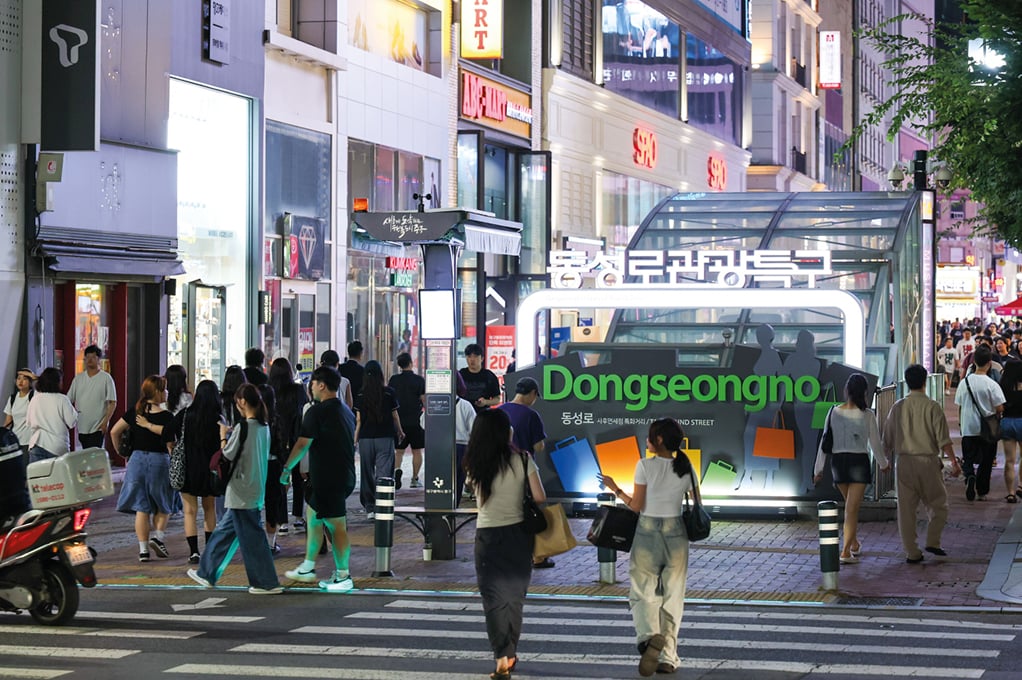
Seomun Market, one of the three major markets from the Joseon Dynasty with a history of over 100 years, continues to thrive as a traditional market, offering a wide variety of food and a popular night market. Dongseongno Street, which holds the history of Daegueupseong Walled Town, is the city's main commercial district and a bustling area filled with various shopping facilities. Jung-gu, Daegu -
- Daegu
- Palgongsan National Park
- Daegu
- Palgongsan National Park
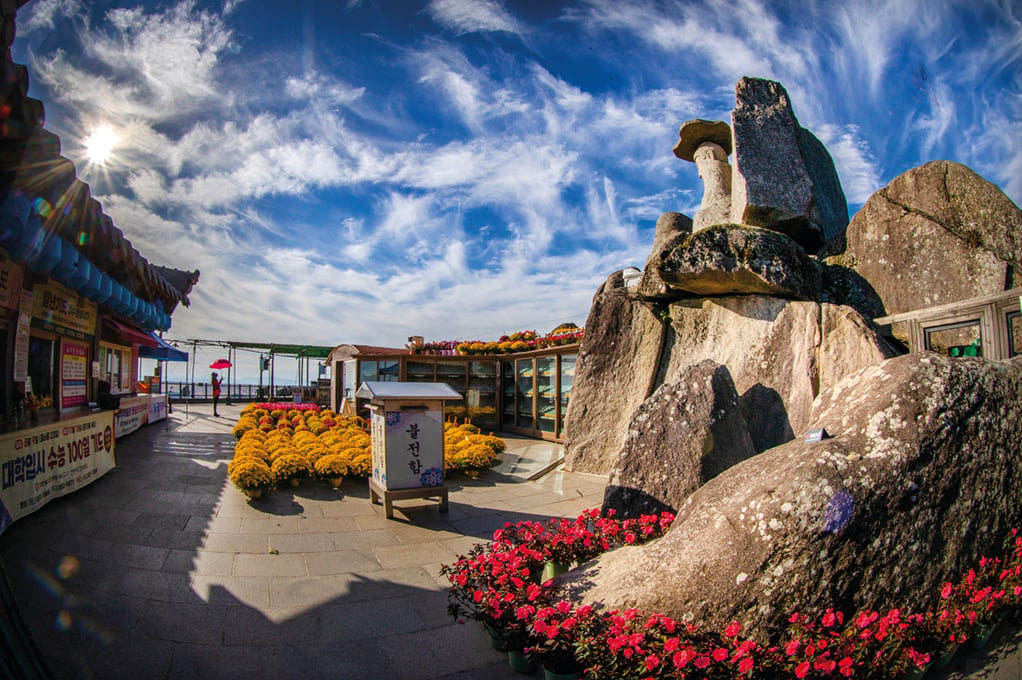
Palgongsan Mountain, a majestic granite mountain standing 1,192.8 m above sea level, was designated a national park in 2023. The mountain is home to ancient temples such as Donghwasa, Pagyesa, and Buinsa, along with various attractions, including restaurants, cafés, and experience centers scattered throughout the area. Dong-gu, Daegu -
- Ulsan
- Daewangam Park
- Ulsan
- Daewangam Park
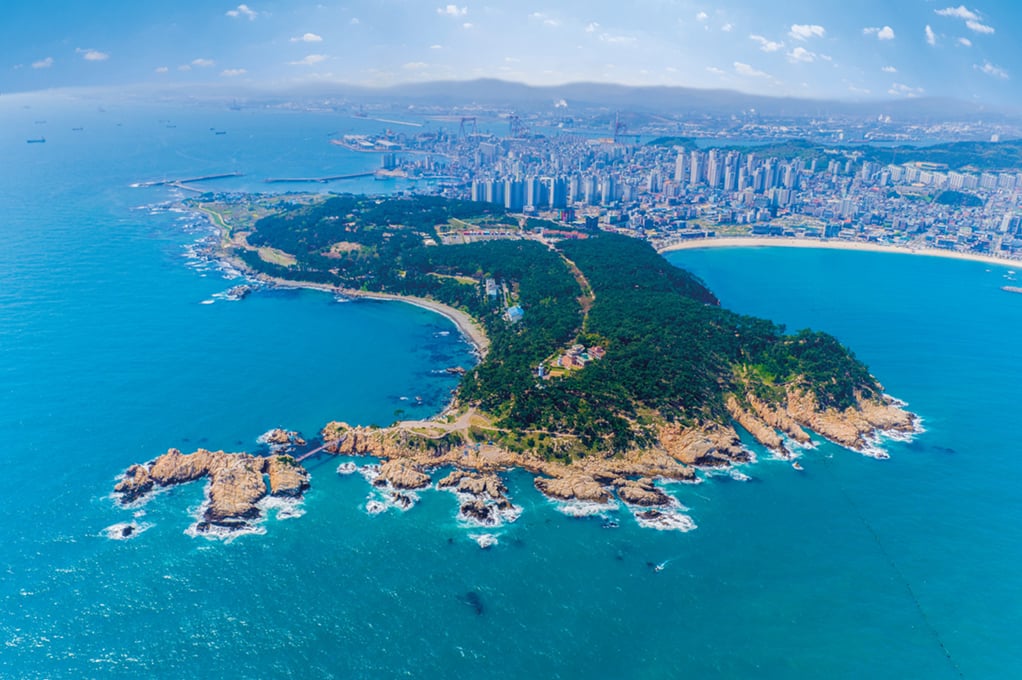
Daewangam Park, the area surrounding Daewangam Rock, is steeped in legend, believed to be the resting place of King Munmu of Silla, who is said to have transformed into a guardian dragon after his death. The park features mysterious rock formations, pristine pine forests, and attractions such as the century-old Ulgi Lighthouse, a suspension bridge, playgrounds, and a campground, offering a variety of activities for visitors. Dong-gu, Ulsan -
- Ulsan
- Yeongnam Alps (Ganwoljae)
- Ulsan
- Yeongnam Alps (Ganwoljae)
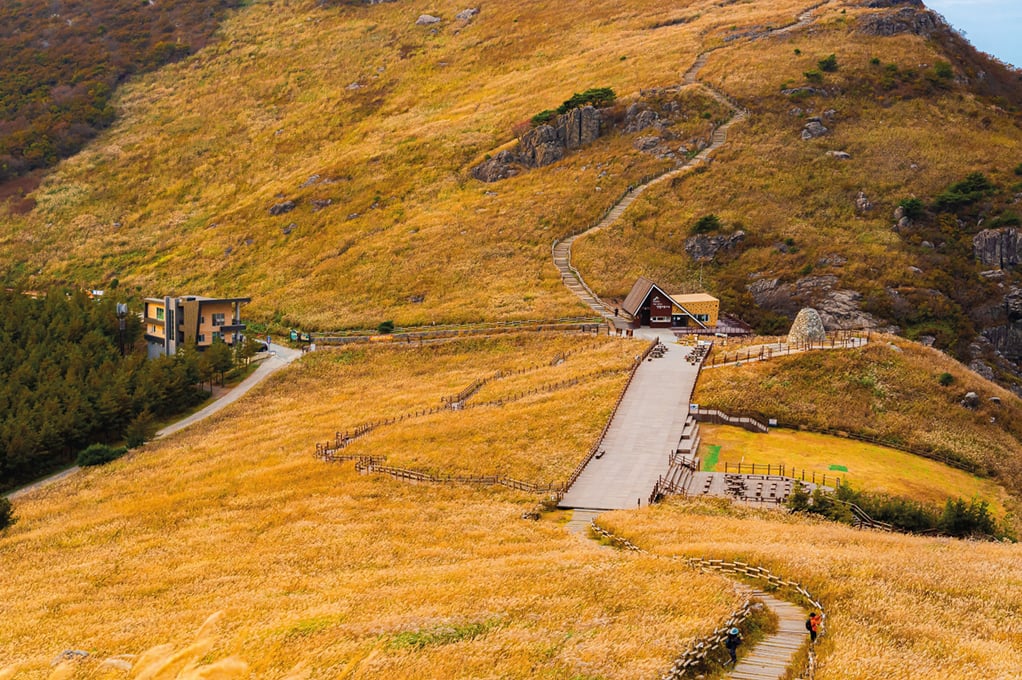
The Yeongnam Alps, centered around Gajisan Mountain, is a breathtaking landscape with several peaks exceeding 1,000 m in elevation, often compared to the Swiss Alps. The area offers stunning views throughout the seasons, with the autumn silver grass being particularly famous. Sangbuk-myeon, Ulju-gun, Ulsan -
- Ulsan
- Taehwagang National Garden
- Ulsan
- Taehwagang National Garden
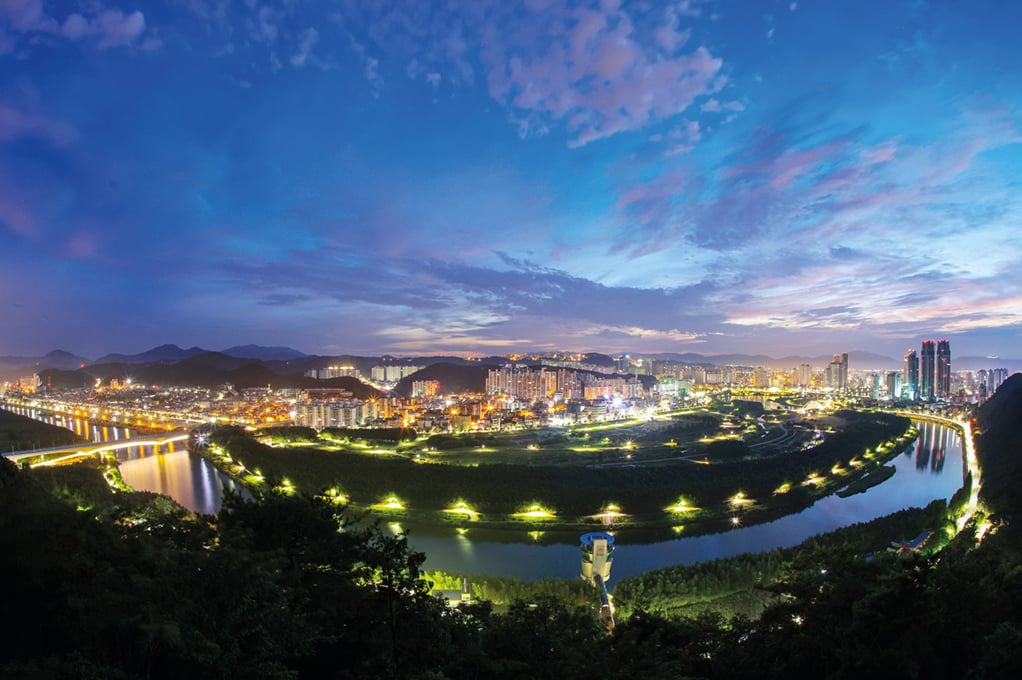
Taehwagang National Garden, which successfully restored the water quality and ecosystem of the Taehwagang River, previously polluted due to industrialization, was designated as the second national garden of Korea in 2019. The garden features various themed areas, such as the Simni Bamboo Grove and Bamboo Ecological Garden, and visitors can stroll along the Milky Way, which sparkles with lights at night. Jung-gu, Ulsan -
- Gyeongsangbuk-do
- Gyeongju Daereungwon Ancient Tomb Complex (Donggung Palace and Wolji Pond, Cheomseongdae Observatory) / Hwangnidan Street / Woljeonggyo Bridge
- Gyeongsangbuk-do
- Gyeongju Daereungwon Ancient Tomb Complex (Donggung Palace and Wolji Pond, Cheomseongdae Observatory) / Hwangnidan Street / Woljeonggyo Bridge
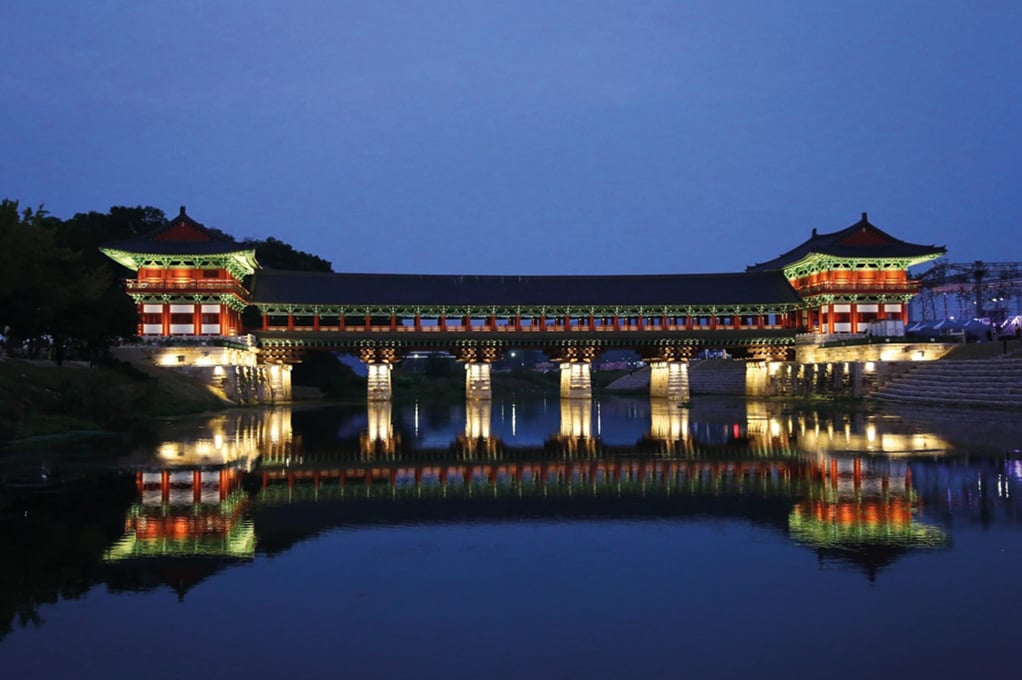
Daereungwon Ancient Tomb Complex is the largest tumulus group in Gyeongju, home to several notable tombs, including Cheonmachong and Hwangnamdaechong. The site also features significant landmarks such as Donggung Palace and Wolji Pond, the royal palace's detached palace site; Cheomseongdae Observatory, a National Treasure; Hwangnidan Street, a bustling street filled with various shops; and Woljeonggyo Bridge, a restored wooden Silla bridge. Gyeongju-si, Gyeongsangbuk-do -
- Gyeongsangbuk-do
- Bulguksa Temple / Seokguram Grotto
- Gyeongsangbuk-do
- Bulguksa Temple / Seokguram Grotto
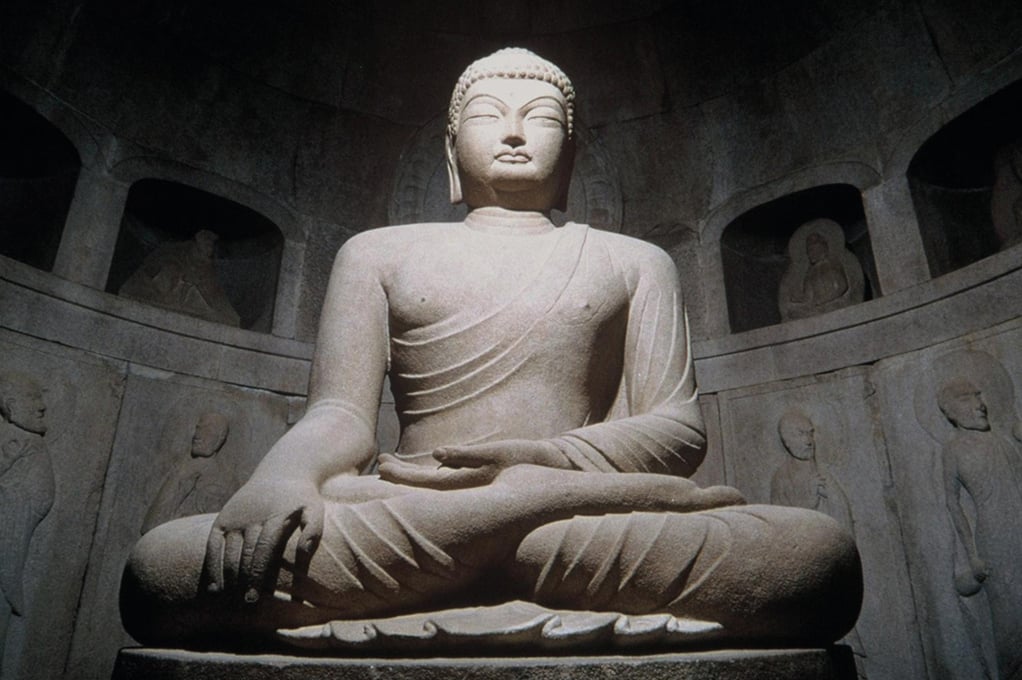
Bulguksa Temple and Seokguram Grotto, the epitome of Silla Buddhist culture, were jointly designated as UNESCO World Heritage sites due to their historical and cultural significance. Bulguksa Temple is home to many important national cultural heritage, including the Dabotap Pagoda and the Three-story Stone Pagoda (Seokgatap). Gyeongju-si, Gyeongsangbuk-do -
- Gyeongsangbuk-do
- Baekdudaegan National Arboretum
- Gyeongsangbuk-do
- Baekdudaegan National Arboretum
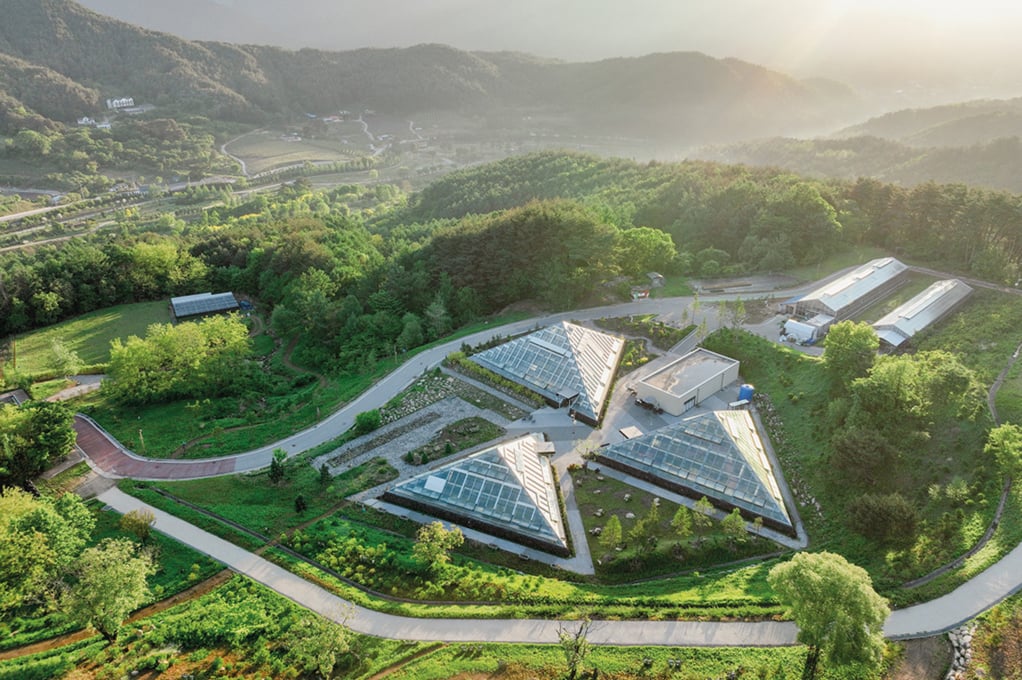
The Baekdudaegan National Arboretum, Asia's largest forest arboretum, features over 40 unique themed exhibition areas dedicated to collecting, preserving, and displaying forest biological resources from the Baekdudaegan mountain range and highland areas. One of its popular attractions, the Tiger Forest, covers an area equivalent to six football fields, allowing visitors to observe tigers from a close distance. Chunyang-myeon, Bonghwa-gun, Gyeongsangbuk-do -
- Gyeongsangbuk-do
- Andong Hahoe Village
- Gyeongsangbuk-do
- Andong Hahoe Village
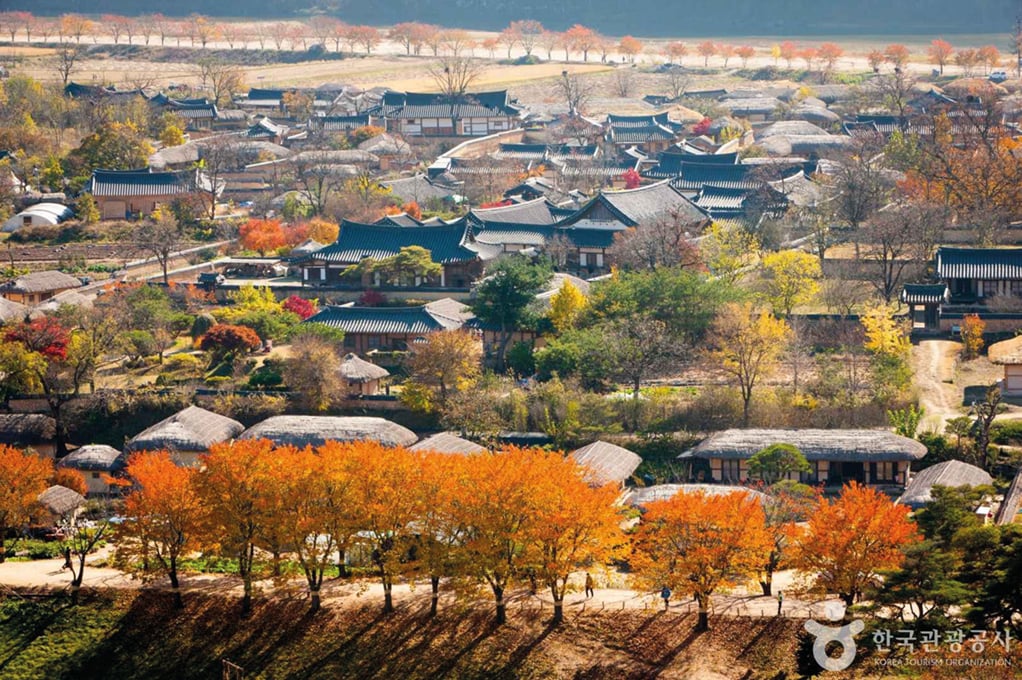
Andong Hahoe Village, a representative traditional village with over 600 years of history, is listed as a UNESCO World Heritage site. The traditional houses, cultural heritage, and customs have been well preserved, making it an ideal place to experience Korea's history and culture deeply. A must-see attraction is the Hahoe Byeolsingut Tallori (Mask Dance Drama of Hahoe), which is performed regularly. Pungcheon-myeon, Andong-si, Gyeongsangbuk-do -
- Gyeongsangbuk-do
- Ulleungdo Island / Dokdo
- Gyeongsangbuk-do
- Ulleungdo Island / Dokdo
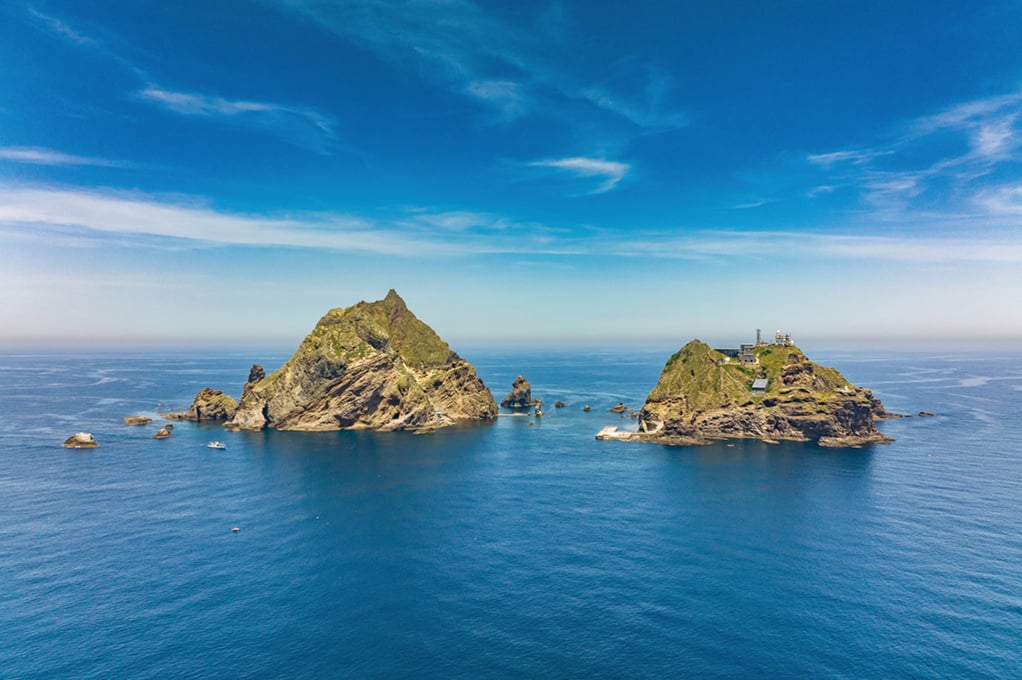
Ulleungdo Island, a volcanic island located in the East Sea, is renowned for its beautiful natural scenery and unique ecosystem, making it a popular destination in South Korea. Dokdo, designated as a natural reserve, consists of two islands, Dongdo and Seodo, and holds significant historical and scientific value. Ulleung-gun, Gyeongsangbuk-do -
- Gyeongsangbuk-do
- Juwangsan National Park / Jusanji Reservoir
- Gyeongsangbuk-do
- Juwangsan National Park / Jusanji Reservoir
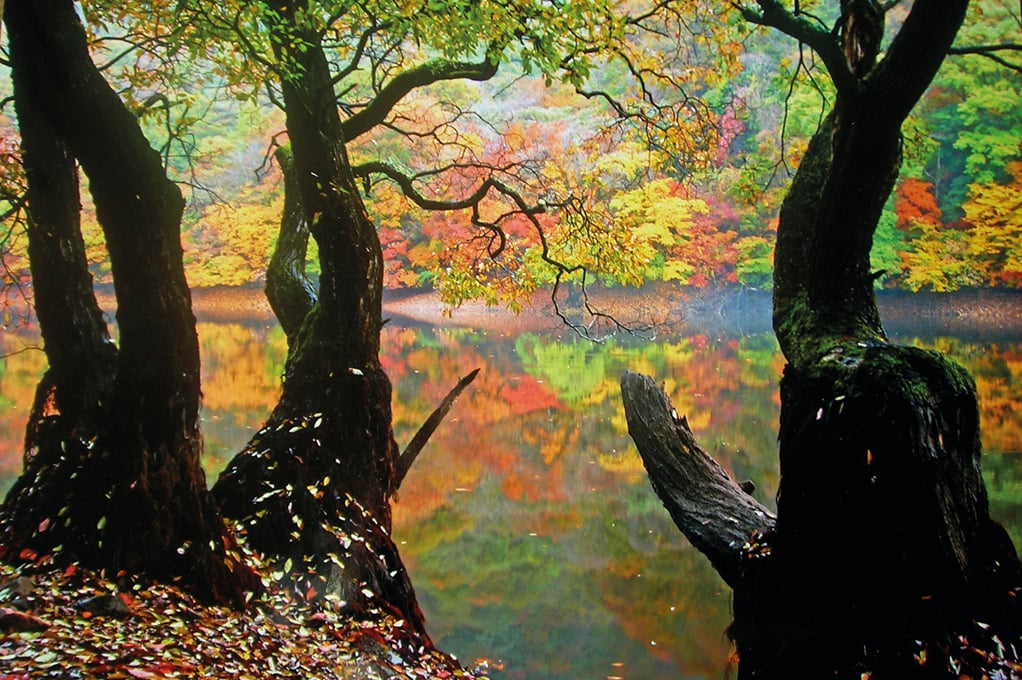
Juwangsan Mountain, designated as a national park in 1976, is one of South Korea's three major rocky mountains, renowned for its breathtaking landscapes shaped by cliffs and valleys. Jusanji Reservoir, built during the reign of King Gyeongjong of the Joseon Dynasty, features naturally growing red leaf willows and weeping willows growing in the water, creating a mystical atmosphere. Juwangsan-myeon, Cheongsong-gun, Gyeongsangbuk-do -
- Gyeongsangbuk-do
- Space Walk
- Gyeongsangbuk-do
- Space Walk
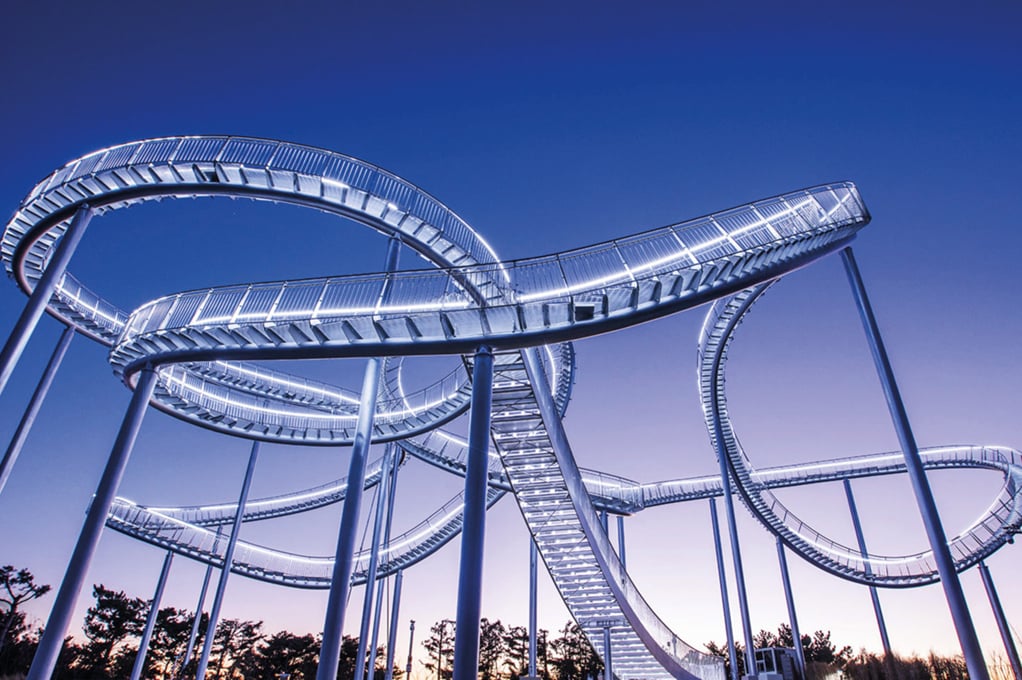
It is Korea's first and largest interactive sculpture, featuring a 330 m track. The elegant steel curves and the lighting that illuminates the night sky symbolize Pohang, the city of steel and light. While walking on the sculpture, visitors can enjoy Pohang's beautiful scenery, the night view of the steelworks, and the sunrise and sunset over Yeongilman Bay. Buk-gu, Pohang-si, Gyeongsangbuk-do -
- Gyeongsangnam-do
- Geoje Botanic Garden
- Gyeongsangnam-do
- Geoje Botanic Garden
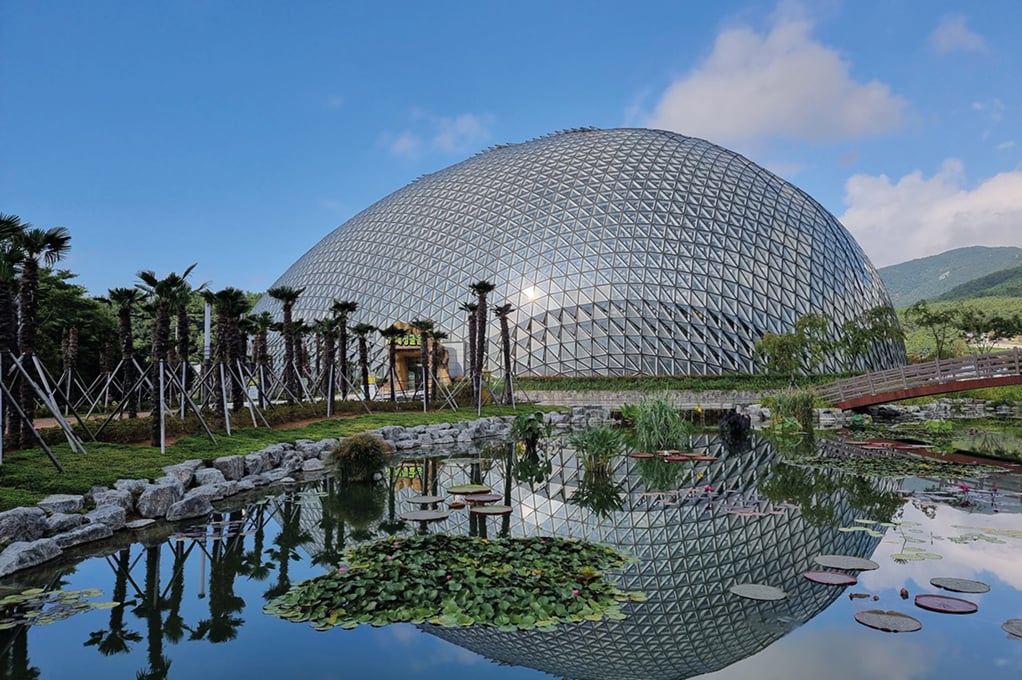
It is a representative family-friendly tourist destination in Geoje, allowing visitors to enjoy nature in an exotic atmosphere year-round. Visitors can explore the massive Jungle Dome, the Jinteullium, and the Ecological Aquatic Garden. The Jungle Tower, a comprehensive adventure experience facility, is especially popular with children. Geoje-myeon, Geoje-si, Gyeongsangnam-do -
- Gyeongsangnam-do
- German Village
- Gyeongsangnam-do
- German Village

This village is home to Korean miners and nurses who, after contributing to the country's economic development by working in Germany, settled here upon returning to Korea. All the houses are built in a German style, creating a unique, exotic landscape. The village features the German Exhibition Hall, an observatory, souvenir shops, and hosts events such as Maifest in May and Oktoberfest (beer festival) in October. Samdong-myeon, Namhae-gun, Gyeongsangnam-do -
- Gyeongsangnam-do
- Sacheon Ocean Cable Car / Aramaru Aquarium
- Gyeongsangnam-do
- Sacheon Ocean Cable Car / Aramaru Aquarium
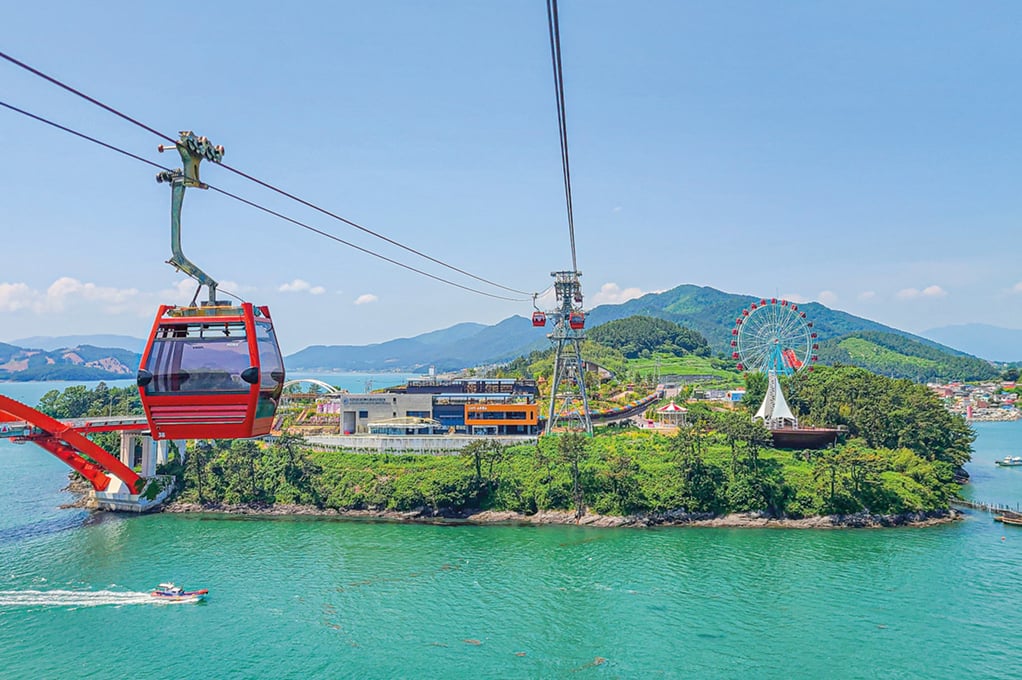
The Sacheon Ocean Cable Car spans 2.43 km, connecting the sea, mountain, and island. It offers views of the Dadohae Archipelago, Samcheonpodaegyo Bridge, and the sunset in Siran. The Aramaru Aquarium is notable for being the first in Korea to feature underwater exhibits, showcasing unique animals such as hippos, shoebills, and Galapagos iguanas. Sacheon-si, Gyeongsangnam-do -
- Gyeongsangnam-do
- Donguibogam Village
- Gyeongsangnam-do
- Donguibogam Village
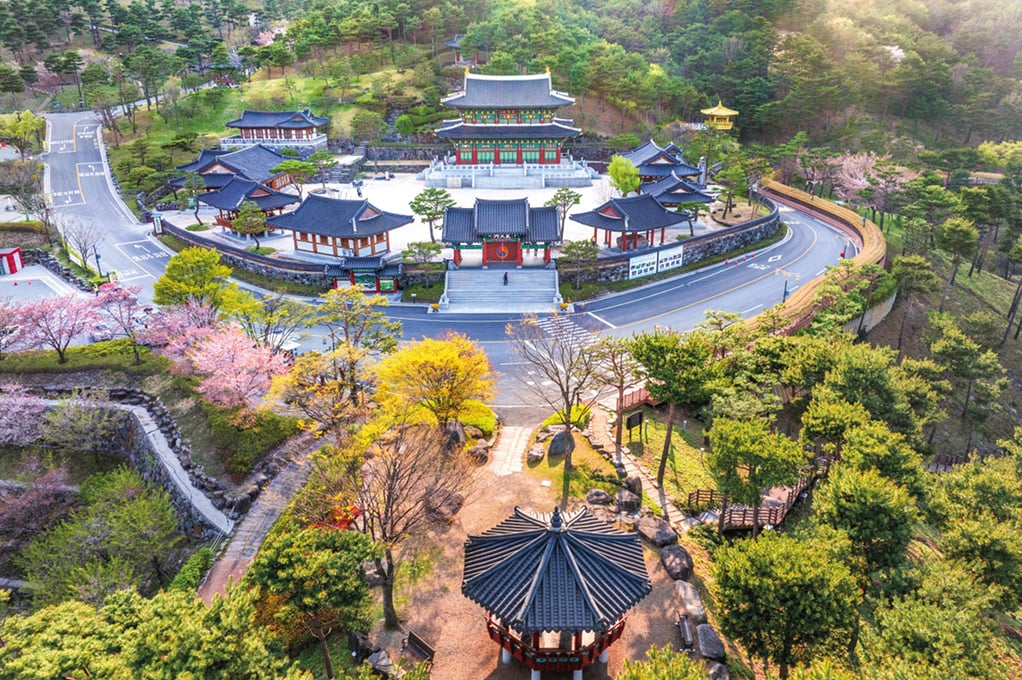
This healing tourism destination focuses on traditional Korean medicine and offers both experiential and lodging facilities. Visitors can explore the Korean Medicine Museum, 'Ki' Experience Hall, Expo Themed Hall, the Korean Medicine Theme Park, and the Korean Medicine Recreational Forest. They can also enjoy restaurants, Korean medicine clinics, herbal stores, and various hands-on programs related to traditional medicine. Geumseo-myeon, Sancheong-gun, Gyeongsangnam-do -
- Gyeongsangnam-do
- Tongdosa Temple
- Gyeongsangnam-do
- Tongdosa Temple
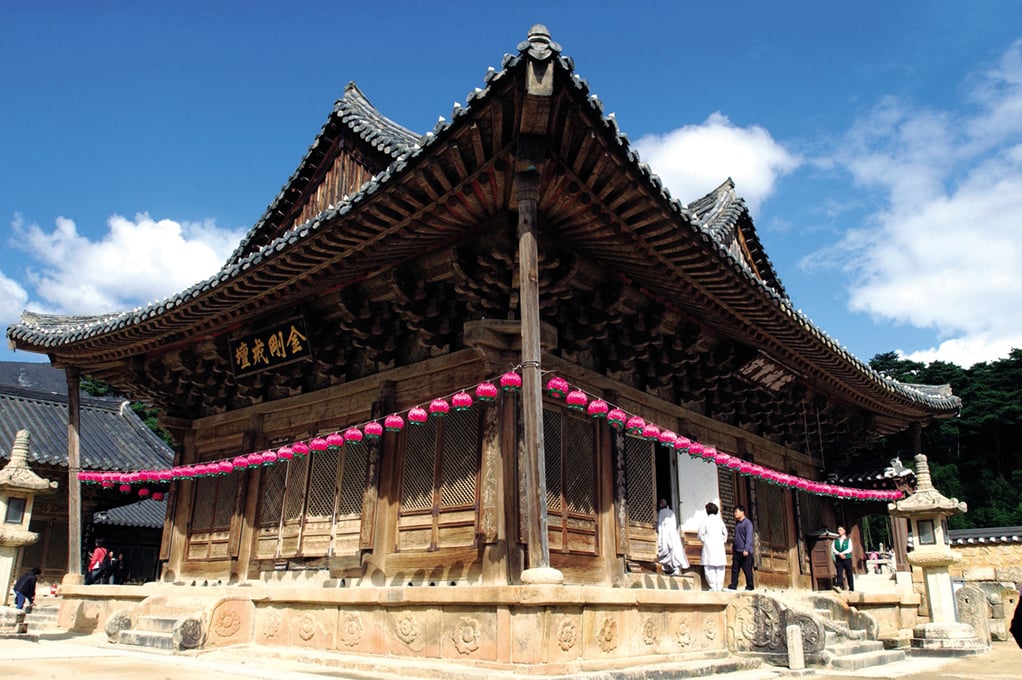
One of the three major temples in Korea that house the true relics of Buddha, it is listed as a UNESCO World Heritage site. In addition to the National Treasures such as Daeungjeon Hall and the Ordination Platform, visitors can enjoy various cultural heritage sites, as well as the natural beauty of red plum blossoms, autumn foliage, valleys, and pine forests. Habuk-myeon, Yangsan-si, Gyeongsangnam-do -
- Gyeongsangnam-do
- Jinjuseong Fortress
- Gyeongsangnam-do
- Jinjuseong Fortress
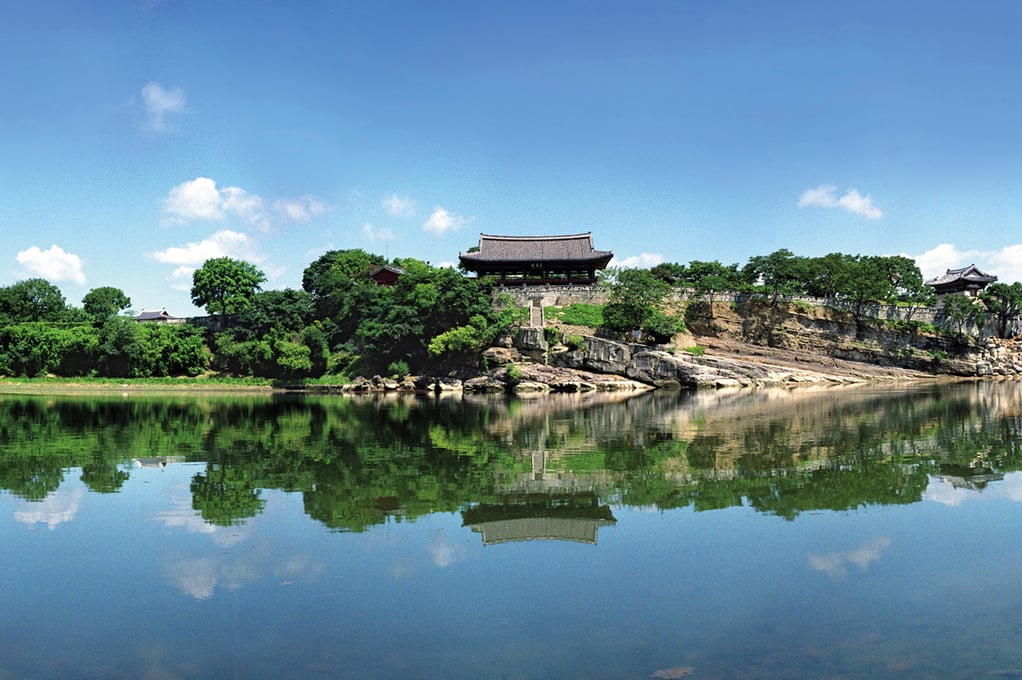
This historical site is where the Battle of Jinju, one of the three major battles of the Imjin War, took place. Located along the Namgang River, the area features various attractions, including the Chokseongnu Pavilion and the Jinju National Museum. It also hosts a variety of events throughout the year, such as the Jinju Namgang Yudeung Festival and the Jinju Nongae Festival. Jinju-si, Gyeongsangnam-do -
- Gyeongsangnam-do
- Uponeup Wetland
- Gyeongsangnam-do
- Uponeup Wetland
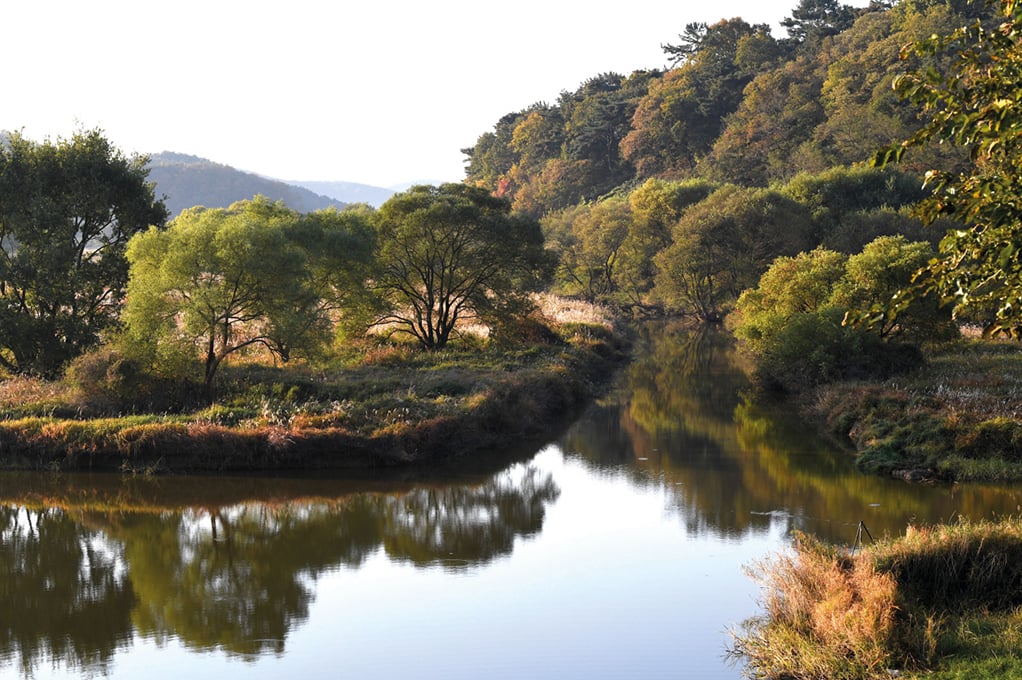
It is the largest natural inland wetland in South Korea, serving as a haven for diverse flora and fauna. Designated as a Ramsar Wetland and a Natural Reserve, it features facilities such as the Crested Ibis Restoration Center, an ecology hall, and various experience centers. The site offers ecological experience programs throughout the year. Yueo-myeon, Changnyeong-gun, Gyeongsangnam-do -
- Gyeongsangnam-do
- DPIRANG
- Gyeongsangnam-do
- DPIRANG
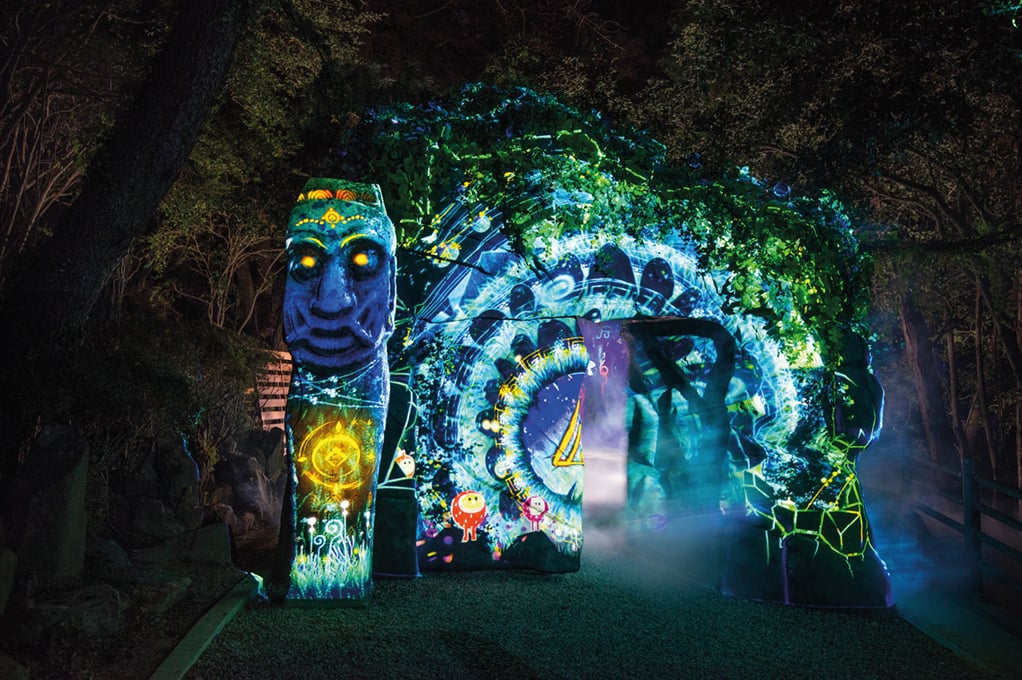
It is the longest nighttime digital theme park in South Korea, created by integrating media art technology, and is located in Nammangsan Park. Inspired by Tongyeong's famous mural villages, Dongpirang and Seopirang, it presents a media show that tells the story of murals that once disappeared and are coming to life again. Tongyeong-si, Gyeongsangnam-do -
- Gyeongsangnam-do
- Ssanggyesa Temple / Hwagae Market
- Gyeongsangnam-do
- Ssanggyesa Temple / Hwagae Market
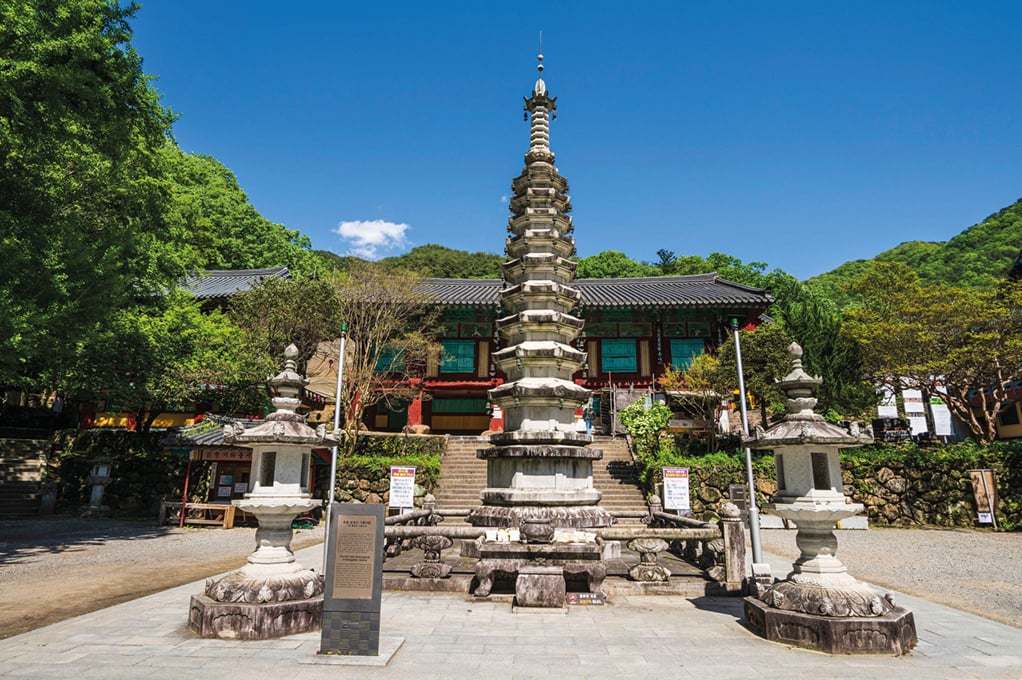
Ssanggyesa Temple, located at the foot of Jirisan Mountain, is a thousand-year-old temple founded during the Silla period. It is home to a National Treasure and several Treasures and is renowned for Korea's first tea farm, cherry blossom street, and autumn foliage. Nearby, Hwagae Market has become a symbol of connection and harmony, bridging the Gyeongsang-do and Jeolla-do provinces. Hadong-gun, Gyeongsangnam-do -
- Jeju-do
- Meochewatsup Forest Trail
- Jeju-do
- Meochewatsup Forest Trail
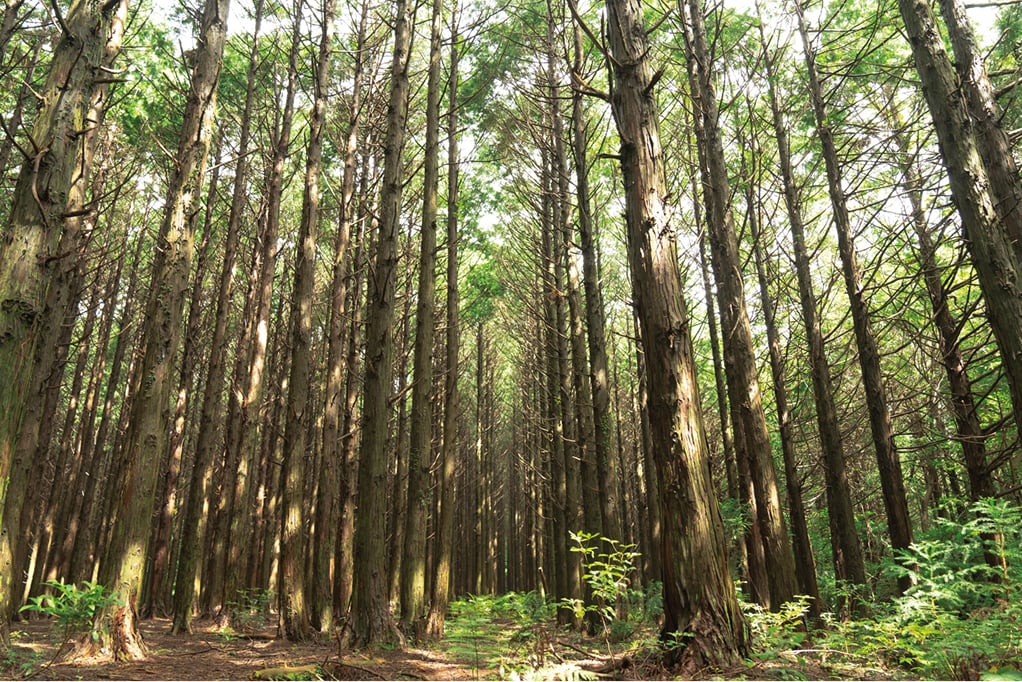
Meochewatsup Forest Trail means "a forest path piled with stones and dense trees." It offers a variety of attractions, with vast meadows, pastures, and primeval forests blending together along the Seojungcheongyegok Valley. The trail consists of three main courses: Meochewatsup, Sorongkot, and Seojungcheon, making it an ideal wellness tourism destination to enjoy a walk through pristine nature. Namwon-eup, Seogwipo-si, Jeju-do -
- Jeju-do
- Bijarim Forest
- Jeju-do
- Bijarim Forest
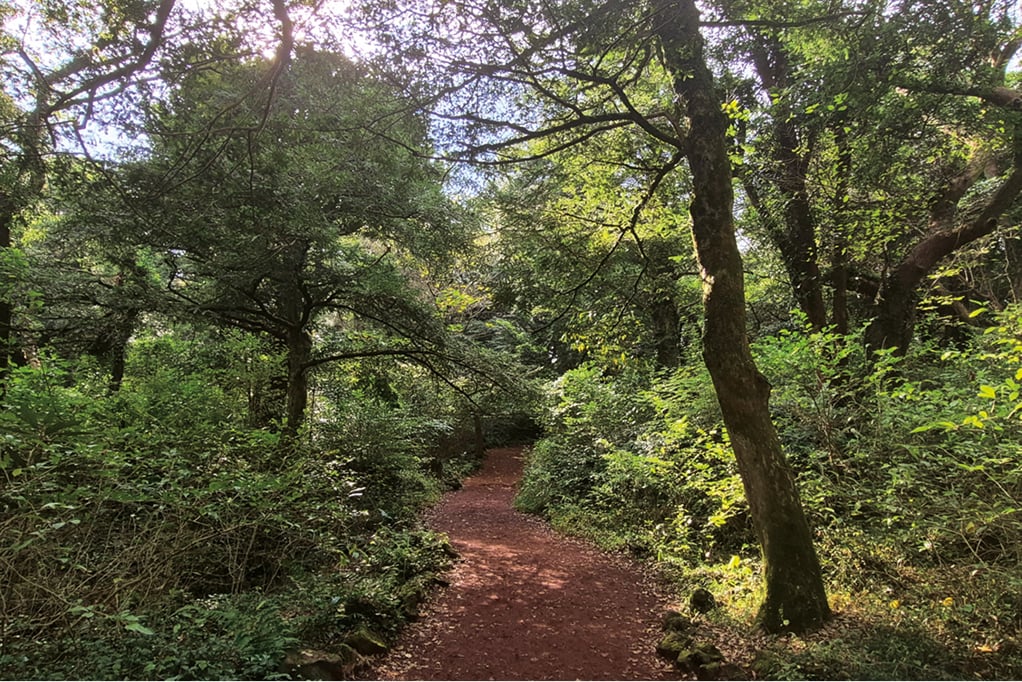
The Bijarim Forest, home to around 2,800 nutmeg trees that are centuries old, is a globally significant site designated as a Natural Monument. In addition to these trees, the forest hosts rare plants, various woody species, and insects. The well-maintained trails make it an easy and ideal spot for visitors to explore. Gujwa-eup, Jeju-si, Jeju-do -
- Jeju-do
- Seongsan Ilchulbong Tuff Cone
- Jeju-do
- Seongsan Ilchulbong Tuff Cone
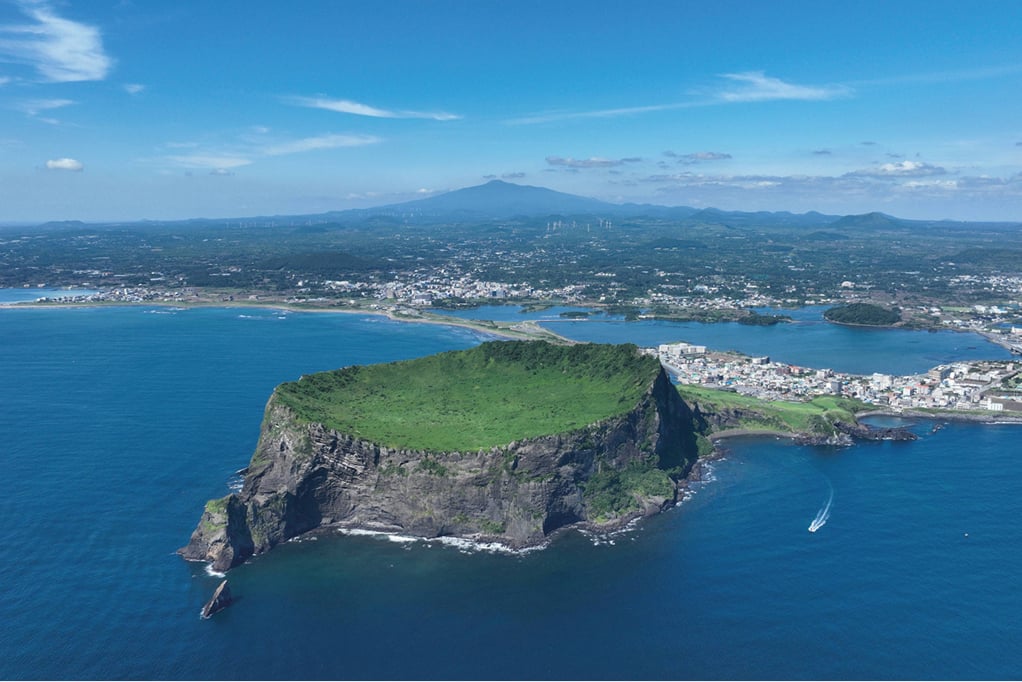
Formed by a volcanic eruption from the sea, Seongsan Ilchulbong Tuff Cone features a unique bowl-shaped crater that spans the entire island. Highly valued for its geological, topographical, and scenic significance, it is protected as a Natural Monument and a UNESCO World Natural Heritage site. As one of Jeju's most popular tourist destinations, it is renowned as a top spot for watching the sunrise. Seongsan-eup, Seogwipo-si, Jeju-do -
- Jeju-do
- Udo Island
- Jeju-do
- Udo Island
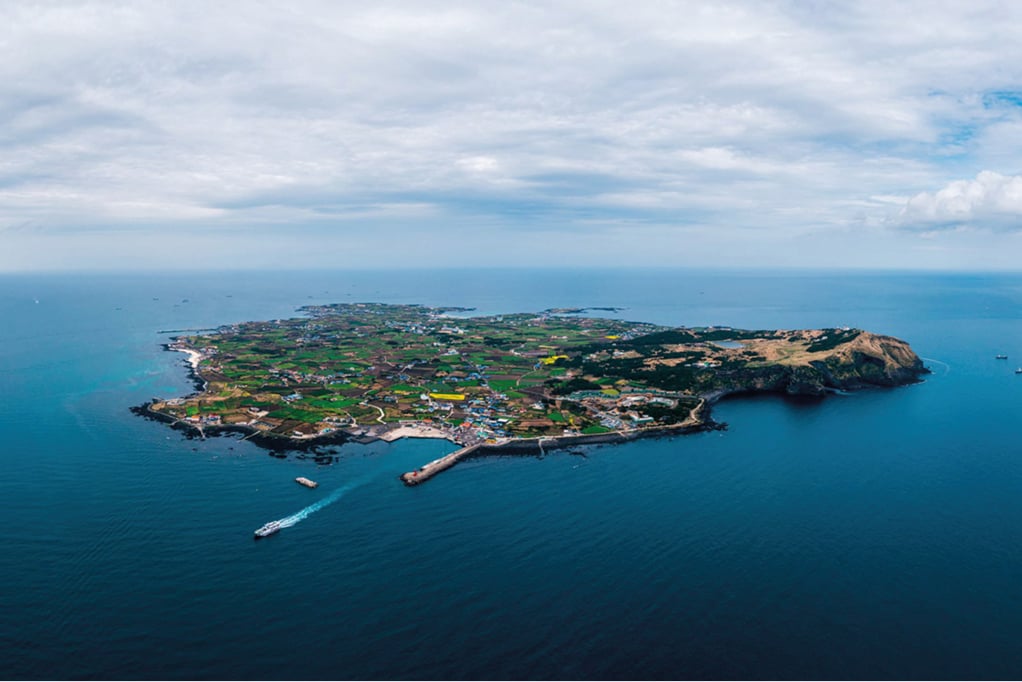
Udo Island, one of Jeju's most representative islets, is named for its shape, which resembles a water buffalo's head or a lying cow. The island is known for its fertile land, diverse fish species, and natural beauty, including the Eight Sights of Udo. Visitors can explore the island on foot, by bus, bicycle, or mini electric car to enjoy its pristine natural surroundings. Udo-myeon, Jeju-si, Jeju-do -
- Jeju-do
- Jeju Olle Trail
- Jeju-do
- Jeju Olle Trail
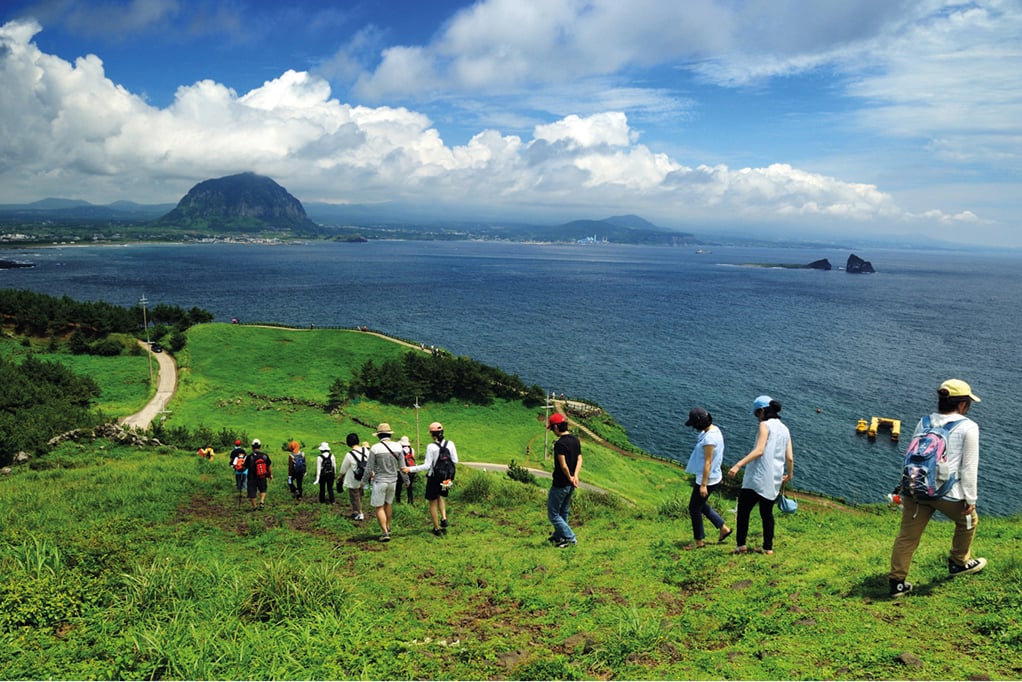
The Jeju Olle Trail is an eco-friendly walking route that encircles Jeju Island, stretching a total length of 437 km across 27 courses. It offers an opportunity to closely explore Jeju's nature and culture. Using the Olle Pass app, visitors can easily access information about the trail and receive mobile certification upon completion. Jeju-si and Seogwipo-si, Jeju-do -
- Jeju-do
- Hallasan National Park
- Jeju-do
- Hallasan National Park

Hallasan Mountain, the highest peak in South Korea, is renowned for its ecological and academic significance. Hallasan National Park, which encompasses the mountain, has been designated as a natural reserve, a national park, a UNESCO Biosphere Reserve, a UNESCO World Natural Heritage site, and a Global Geopark. The park, along with Hallasan's Baengnokdam Crater Lake, boasts beautiful scenery throughout all four seasons. Jeju-si and Seogwipo-si, Jeju-do
-





